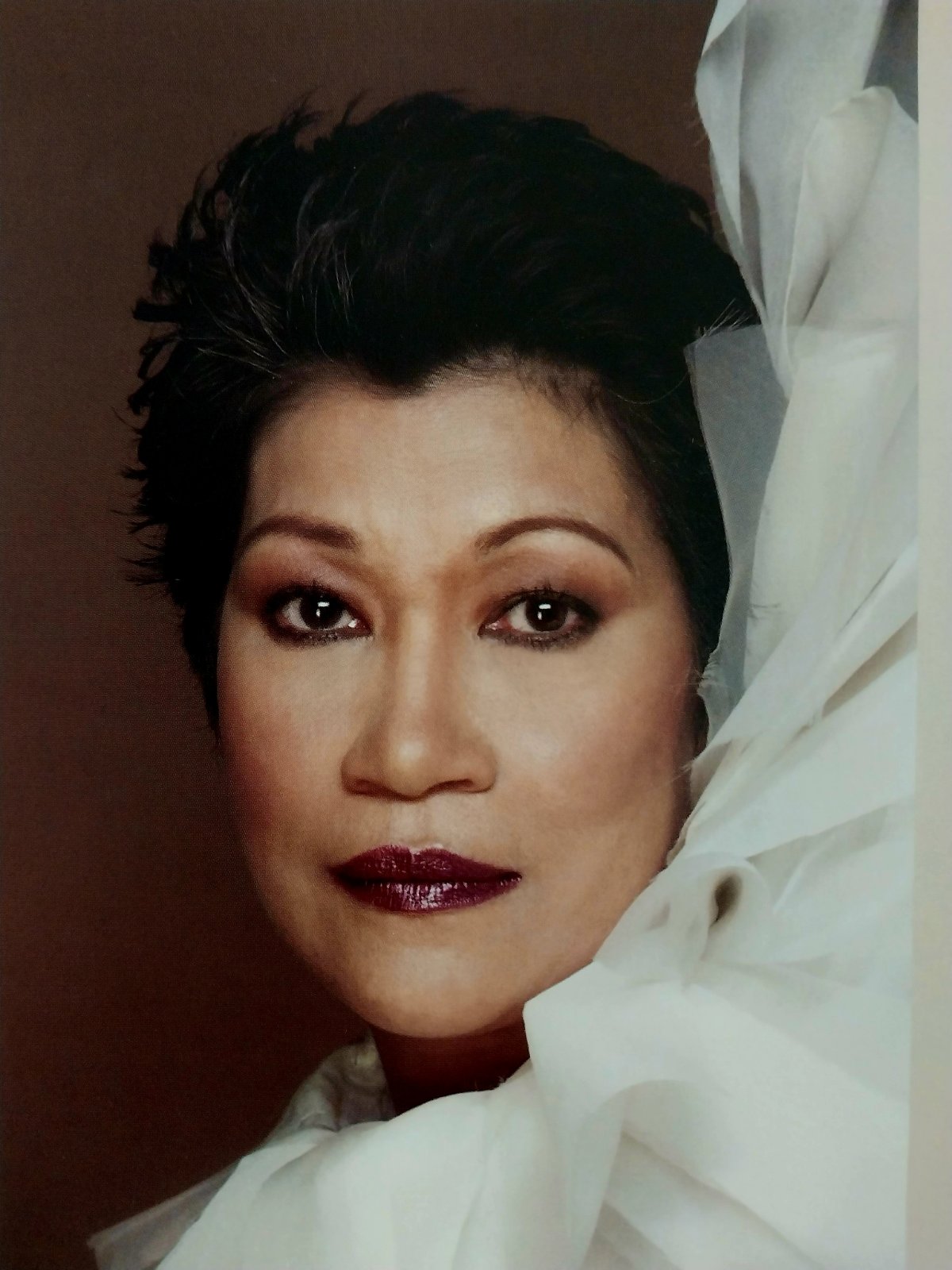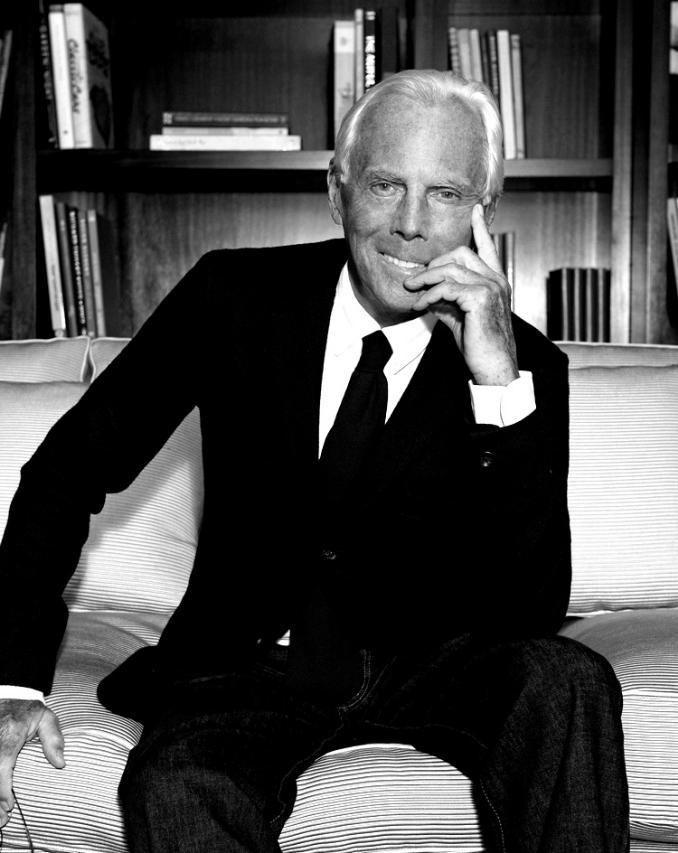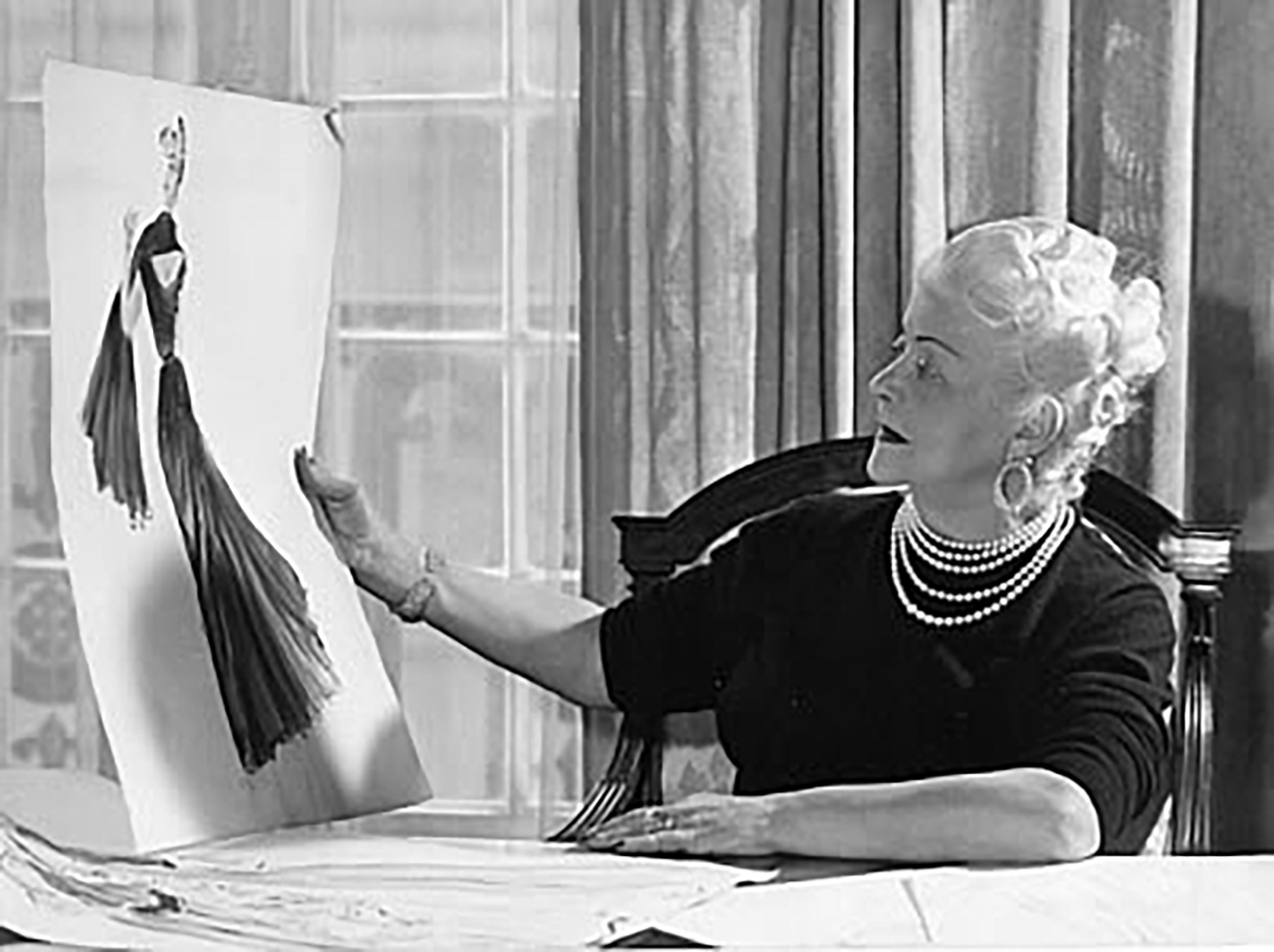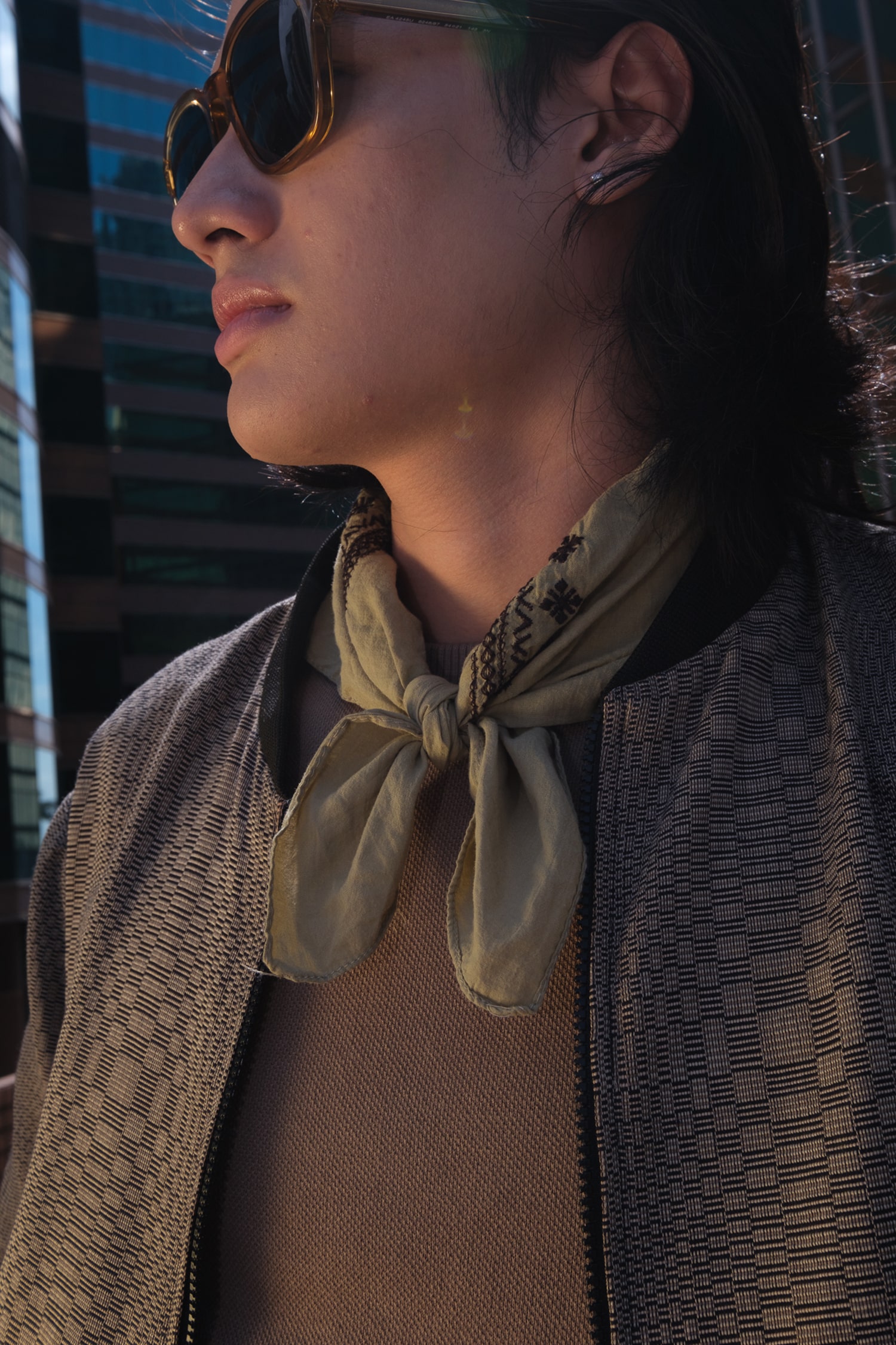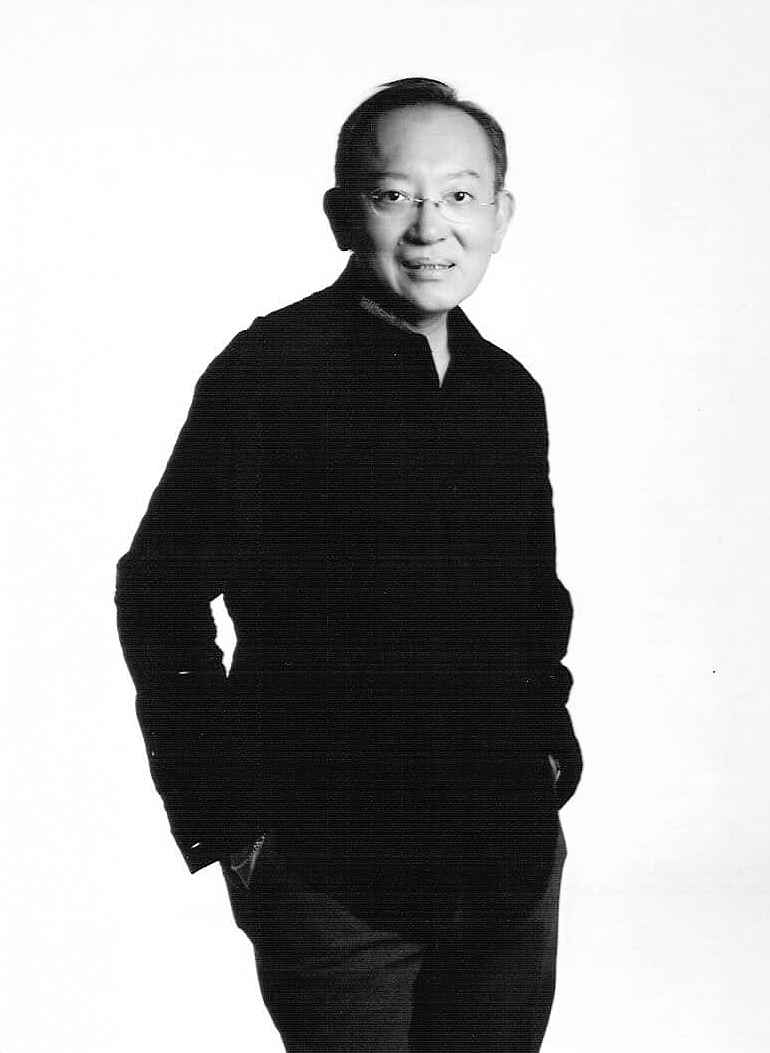Style
Under the Radar: Bernice Romualdez-Ocampo Finds the Perfectly Balanced Life at Milagros Farm House in Toledo
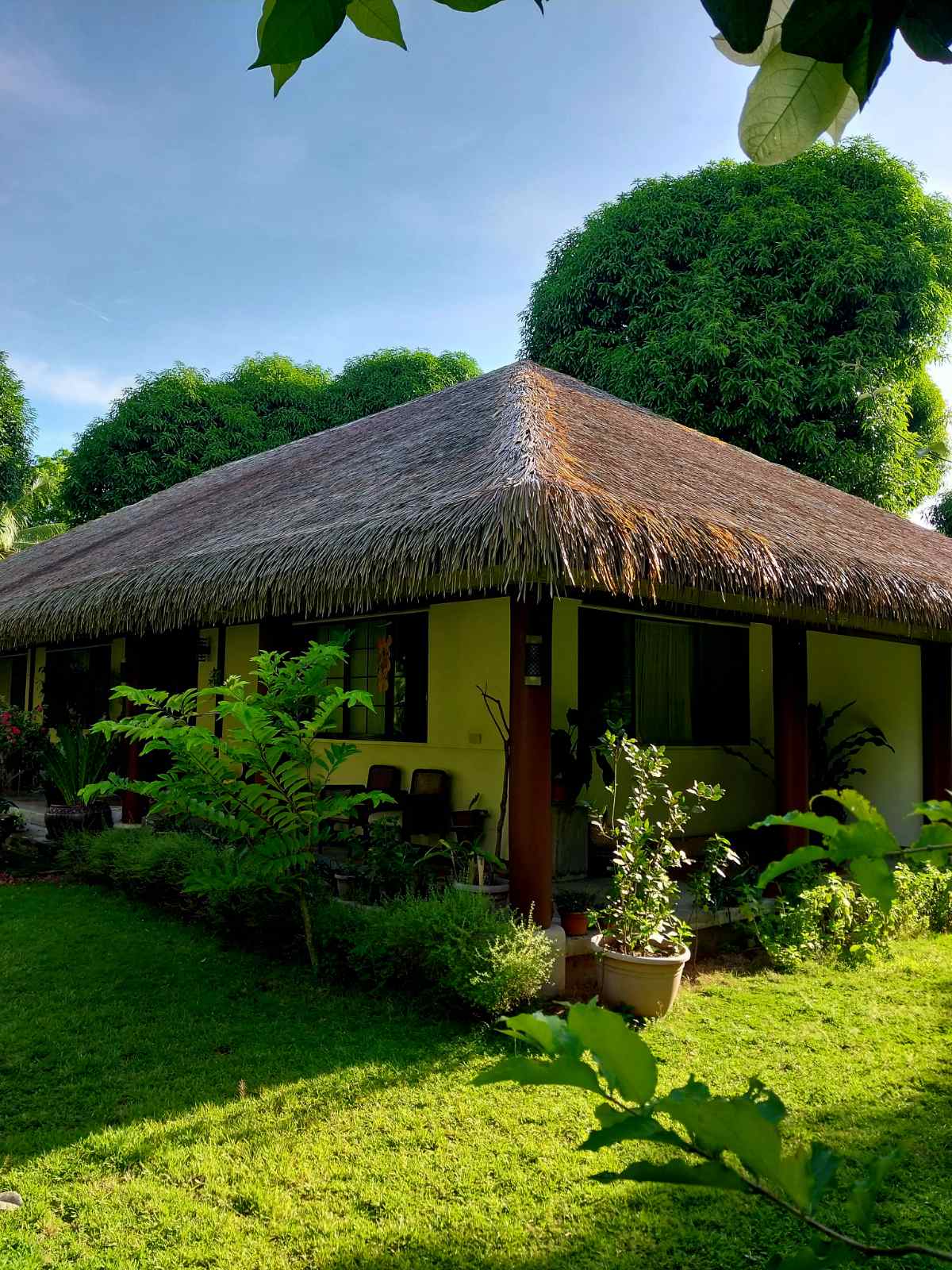
By Jing Ramos
After 45 years of marriage to Golden Ocampo, having raised two sons—Carlo and Franco—as well as managing a huge household in Manila, Bernice Romualdez-Ocampo had an unexpected change of heart. One day, she realized that she was wishing for a much simpler life in the countryside. “Living in the nation’s capital wasn’t exactly my scene anymore, particularly at this point in my life. I have always longed for a garden on a farm to tend to. Having grown up seeing my mother, Milagros Lebumfacil Romualdez, puttering around with plants—in fact, I was inspired by her love of the land and devotion to the process of creating a garden,” Bernice reflects on the start of her journey.
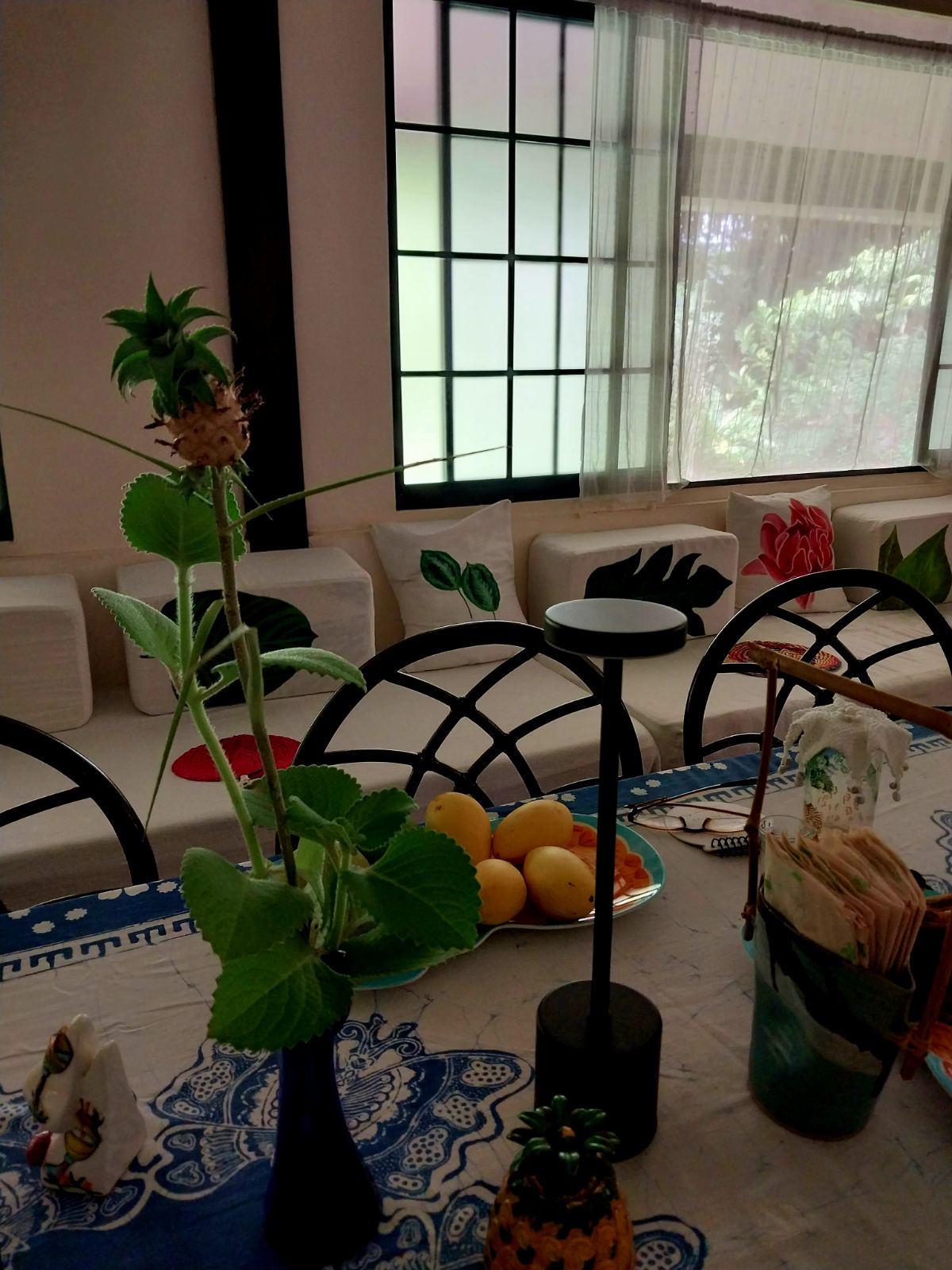
The pillows that adorn the beige sofa are hand-painted by her brother, the artist Chicoy Romualdez.
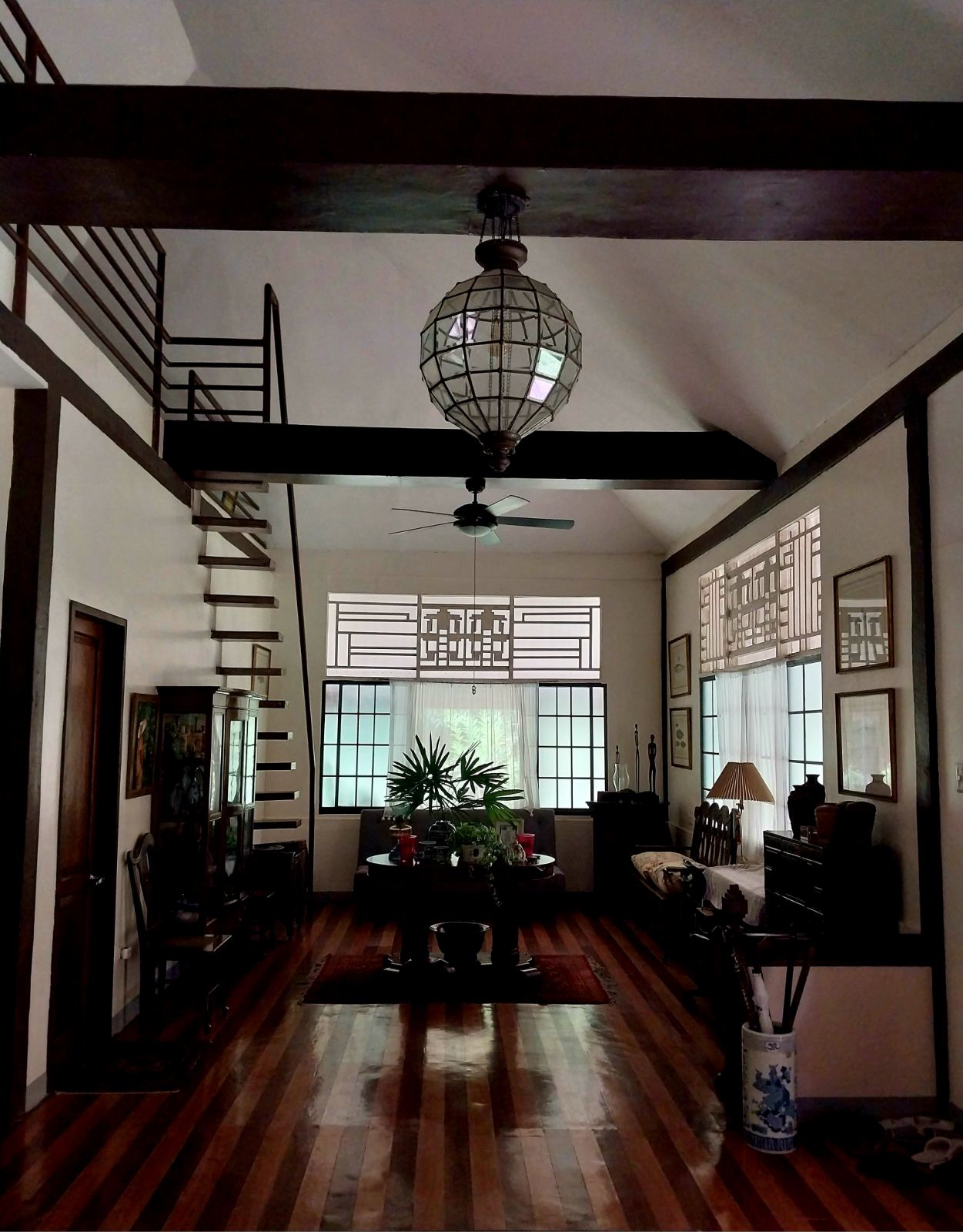
The charming contrast of biscuit-colored walls and ceiling against the wooden doors and flooring creates a warm and inviting atmosphere.
Eventually, Bernice inherited the Toledo farm property with her siblings, but only she took an interest in developing the land. The property spans around 3.4 hectares of farmland, teeming with a biodiversity of fruit trees, endemic species of plants, birds, and even bees.
There are fruit-bearing trees: mango, santol, breadfruit, atis, lime, dayap, and the like. Combining different fruit trees in a mixed orchard enhances pollination, biodiversity, and pest resistance. These fruit trees grow side by side with other endemic trees like kampong, narra, royal poinciana, and the local Palawan cherry.
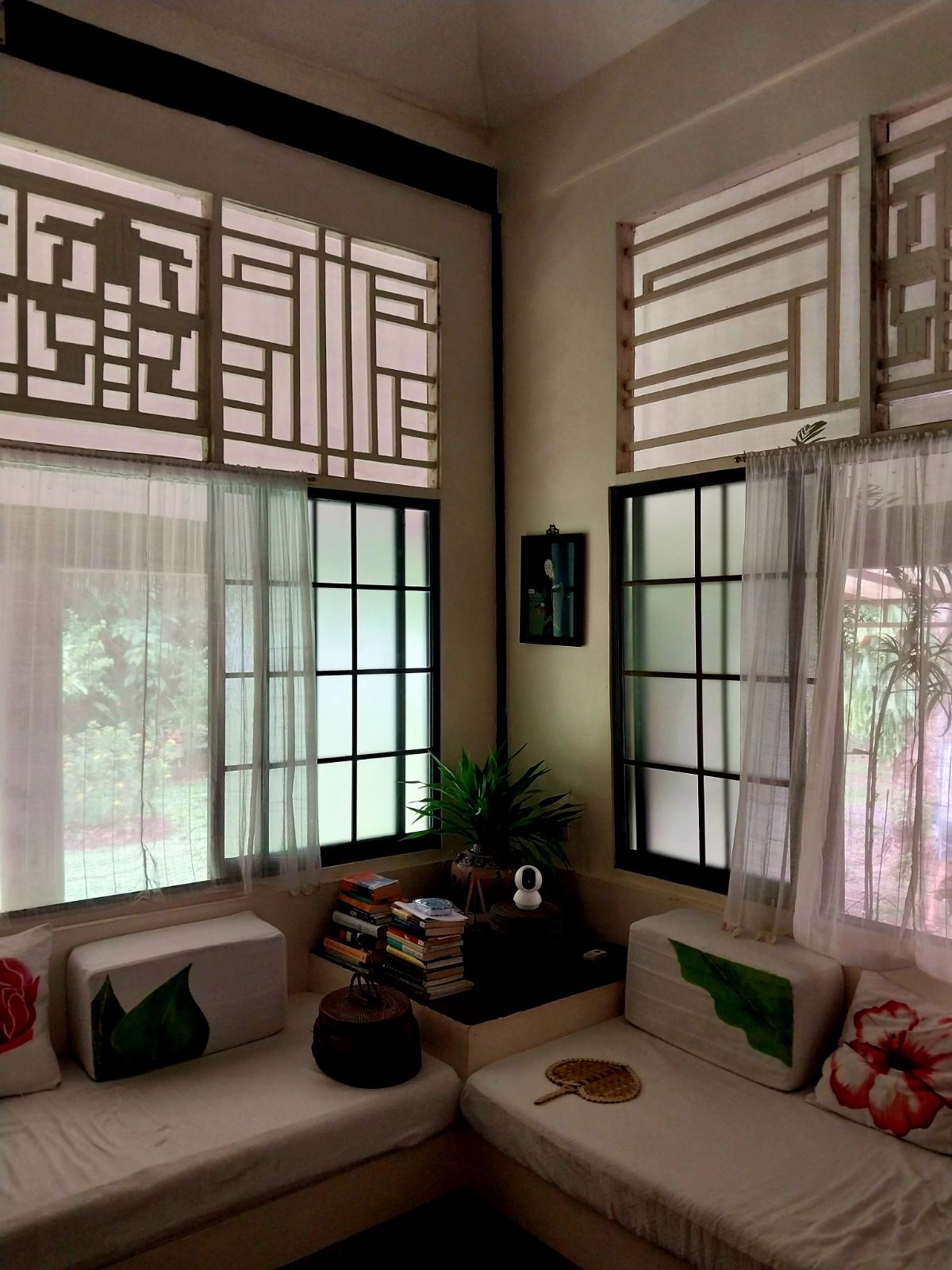
All the architectural details were taken from the Lebumfacil ancestral house in Fuente Osmeña, Cebu.
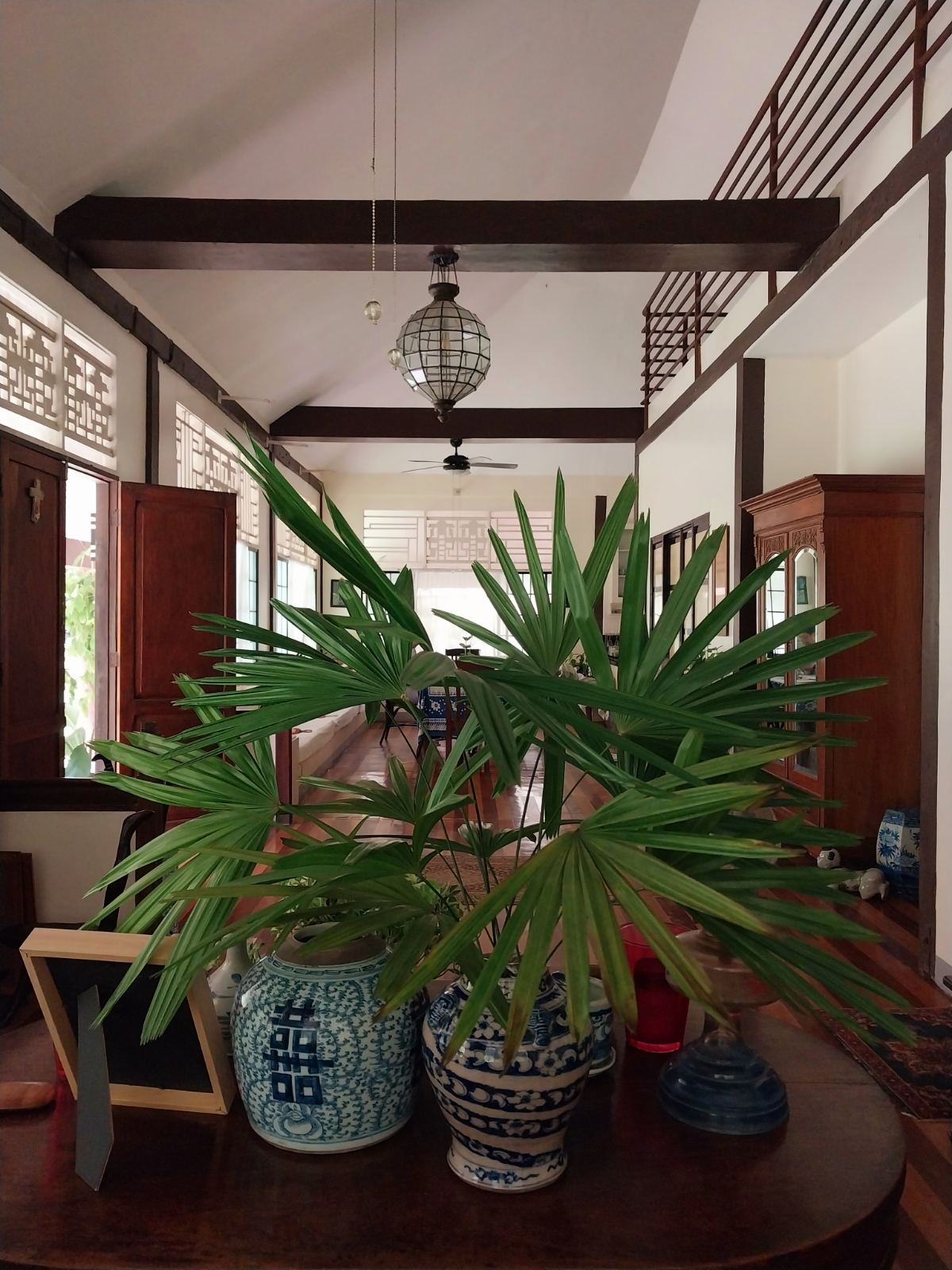
Antique blue and white ceramics hold anahaw palm fronds gathered from the garden.
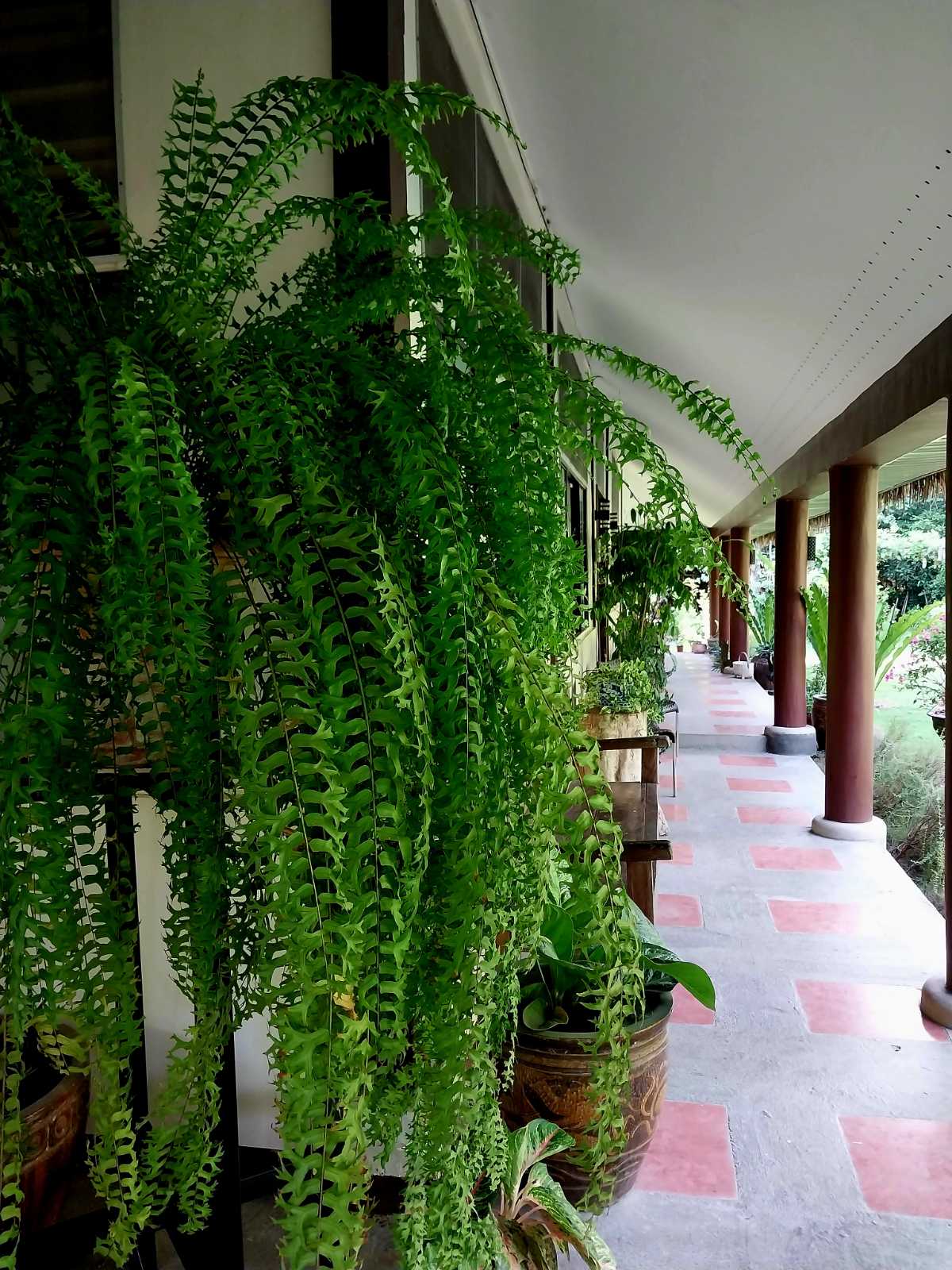
The lanai, bordered by wooden columns, opens to a thriving garden.
Back in the days when Bernice would visit her mother Milagros, she noticed that it was indeed a healthier lifestyle—simple and peaceful—and being surrounded by foliage was just the kind of life she was yearning for. She worked on the relocation tirelessly, and today the farmhouse is tastefully done in a colonial-style, thatched-roof building with wooden columns bordering the lanai. The interior of the building is an exercise in calm restraint: the walls are painted a shade of biscuit, providing a pleasant contrast to the polished wooden floors. Most of the architectural details integrated into the building came from the Lebumfacil ancestral house in the center of Fuente Osmeña in Cebu—hence the name, Milagros Farm House.
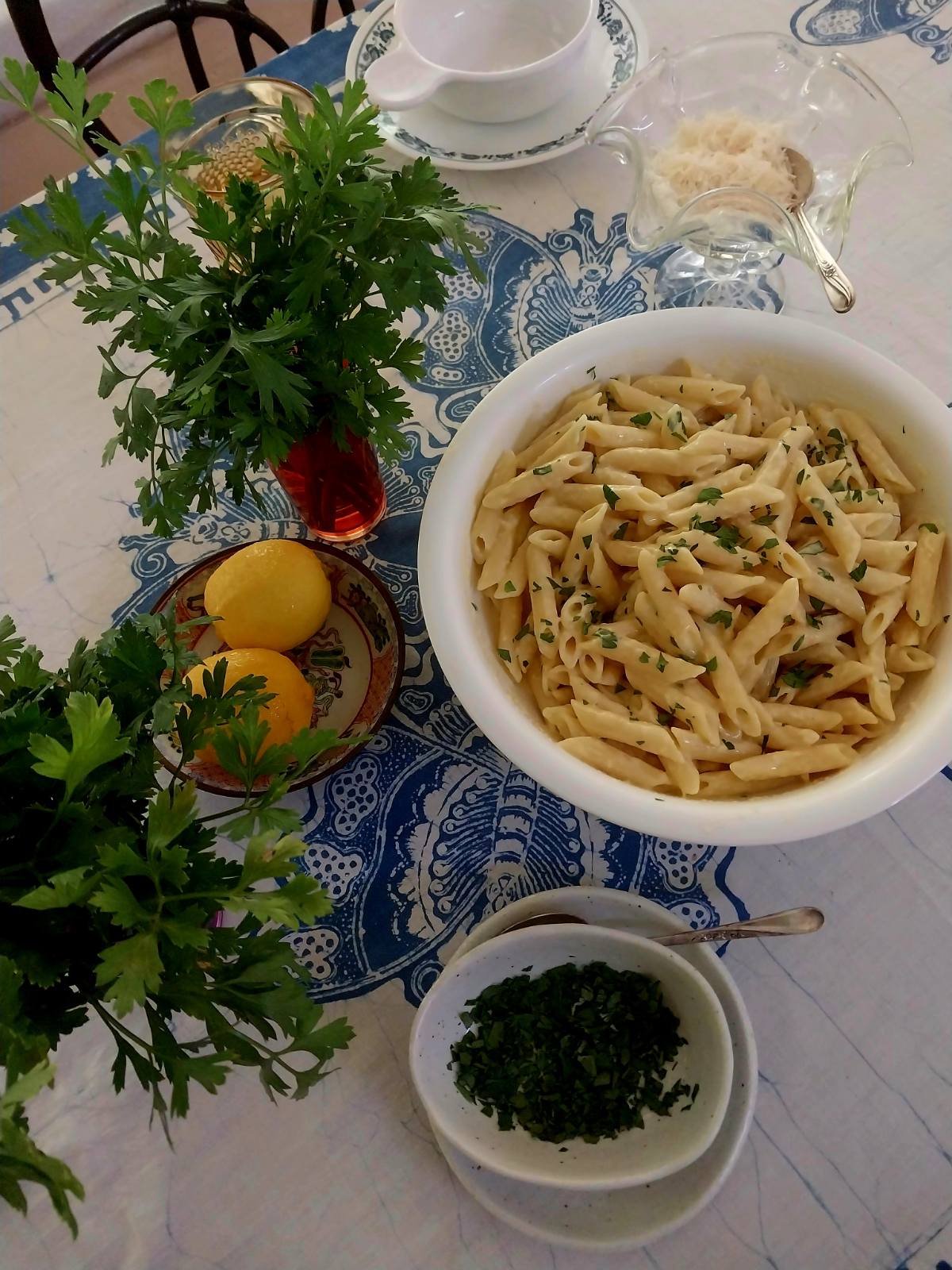
Lunch is served with arrangements of parsley and lemon, the primary ingredients in the pasta dish.
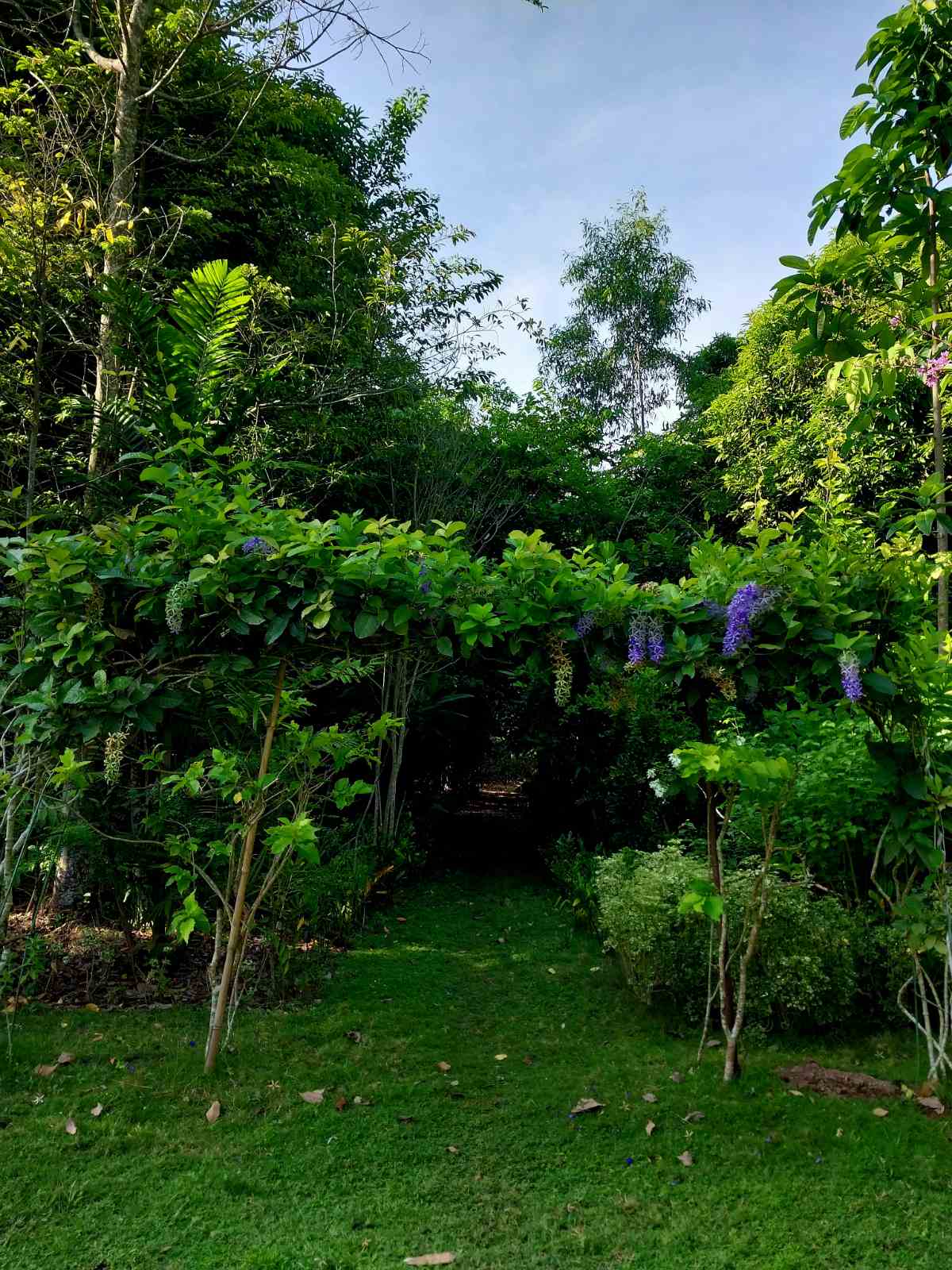
Garden of earthly delights
“Decades back, in my youth, I reveled in Manila city life: dining out with friends, staying up late into the night, traveling extensively, and even strutting down a fashion ramp as a model. That was the life then, I thought. These days, the tables have turned, and instead, gardening has taught me that nature always gives us back whatever we put in—rewarding our labor with fruits and flowers, and most importantly, blessing our lives with a strong sense of fulfillment and inner peace,” Bernice offers us a glimpse of her idyllic life on the farm.
Bernice Romualdez-Ocampo, photography by Raymond Isaac, styling by Patrick Rosas
Style
Happy Melendres Traipsing Around Manhattan in Non-Stop Armani
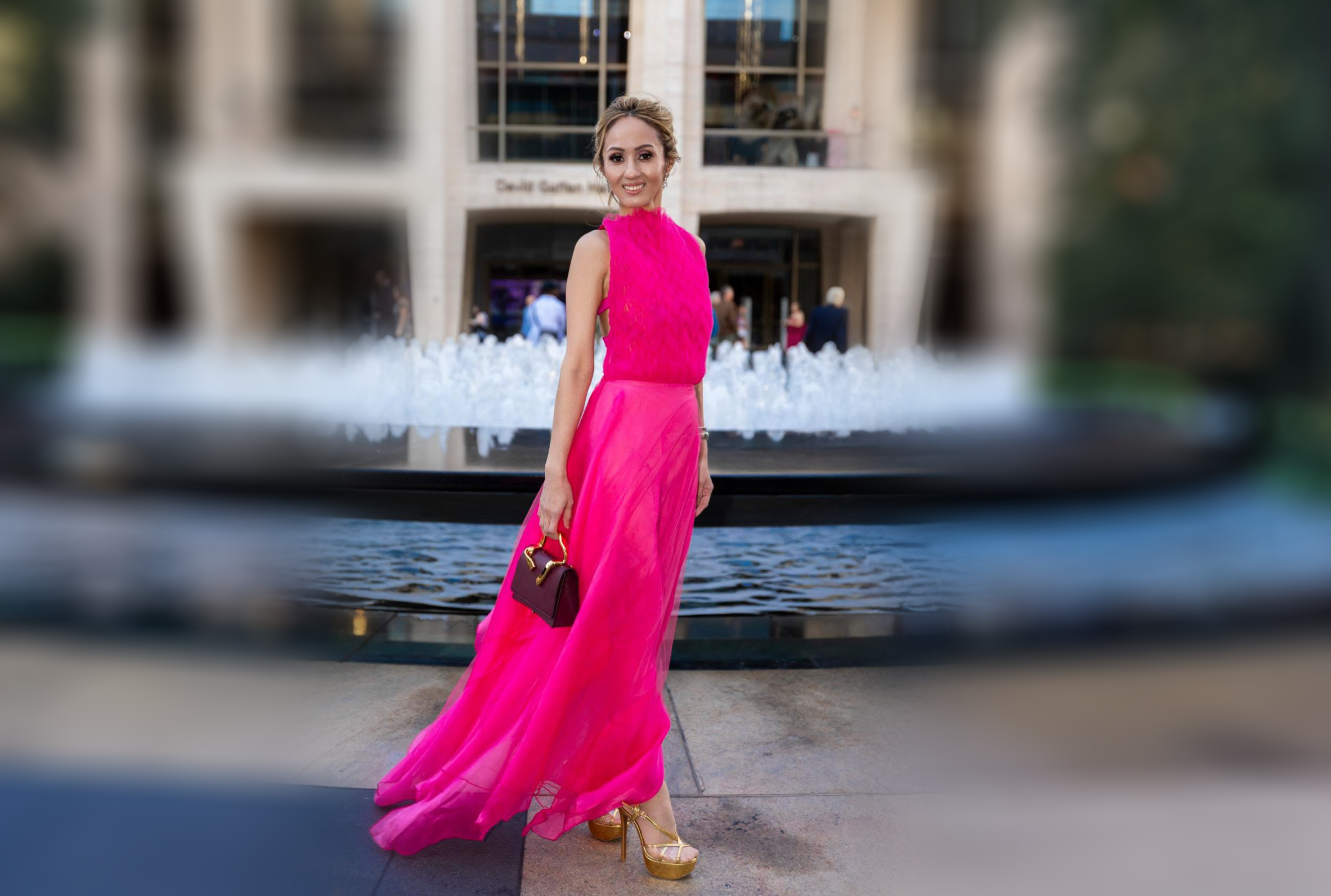
by Jing Ramos
VIP Consultant Stylist: Marlon Corvera
Photos by: Dennis Tooshkanov
Location: Manhattan, New York
Manager: Monique Arceneaux
Assistant Manager/Lawyer: Tracey Chambers
Fashion: Giorgio Armani
Hair: Viki Lulgjuraj
Makeup: Imogene Raypon
The fashion house of Armani has long been known for its understated luxury and powerhouse clientele — the likes of Jacqueline Onassis, Richard Gere, and Julia Roberts.
Mr. Armani, as he was always respectfully referred to, symbolized Italian style that leaned toward subtlety rather than extravagance. The iconic designer valued constant reinvention, aiming to deliver clean, essential lines of clothing. He firmly believed in perfectionism as a meaningful pursuit in life.
Mr. Armani’s recent passing left a gap in the industry, though his fashion story continues to live on. Happy Melendres pays tribute to the master in a collection of carefully curated Armani dresses set against the stunning backdrop of Manhattan. To recall Mr. Armani’s quote on style:
“Individual style is the correct balance of knowing who you are, what works for you, and how to develop your own personality.”
Mr. Armani’s brand personality rejected mainstream status symbols.
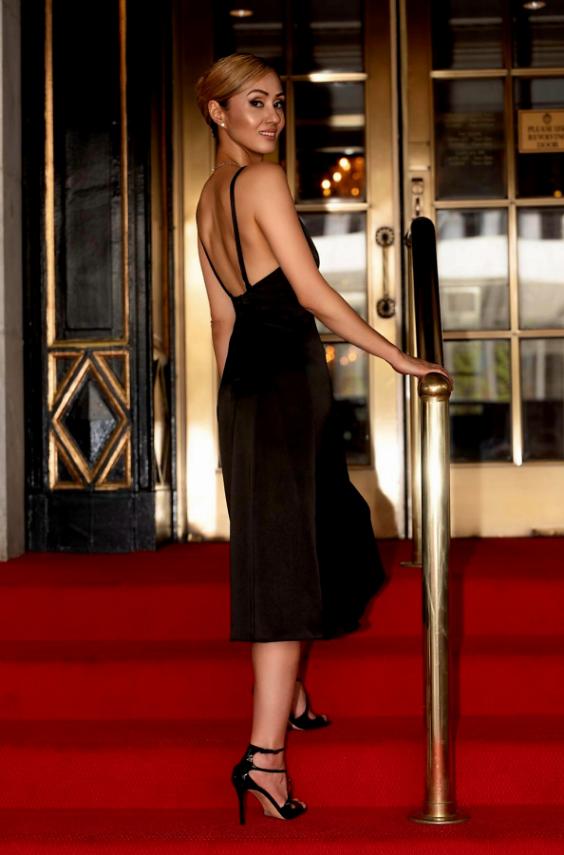
Halter top slip dress in black viscose at the entrance of the Plaza Hotel
How did this amazing experience happen to you?
I just happened to be introduced to Marlon Corvera, the premier style consultant for classical artists in ballet and opera. He was the one who chose the Armani gown for me, and I was thrilled to follow his advice.
Tell us about the whole process of fitting into an Armani dress.
I would describe it as simply magical. Marlon chose the dresses based on what he saw in me and my personality — and I couldn’t agree more. I was also amazed by the professionalism of Jose Nolasco, who made sure that the gown fit me perfectly. I can’t divulge their secrets, but I will say that they truly know how to make the people who wear their creations feel special.
What makes Armani different from other luxury clothing brands, personally?
I think it’s in the way Armani captures and enhances the silhouette. The way the dresses flow — accentuating what needs to be accentuated — and how the exquisite fabrics feel when they touch one’s skin, it’s like a gentle hug that uplifts the wearer’s soul. Even when you’re having a bad day, wearing an Armani piece is an instant pick-me-up — it makes you look great and feel great. Armani’s style is timeless.
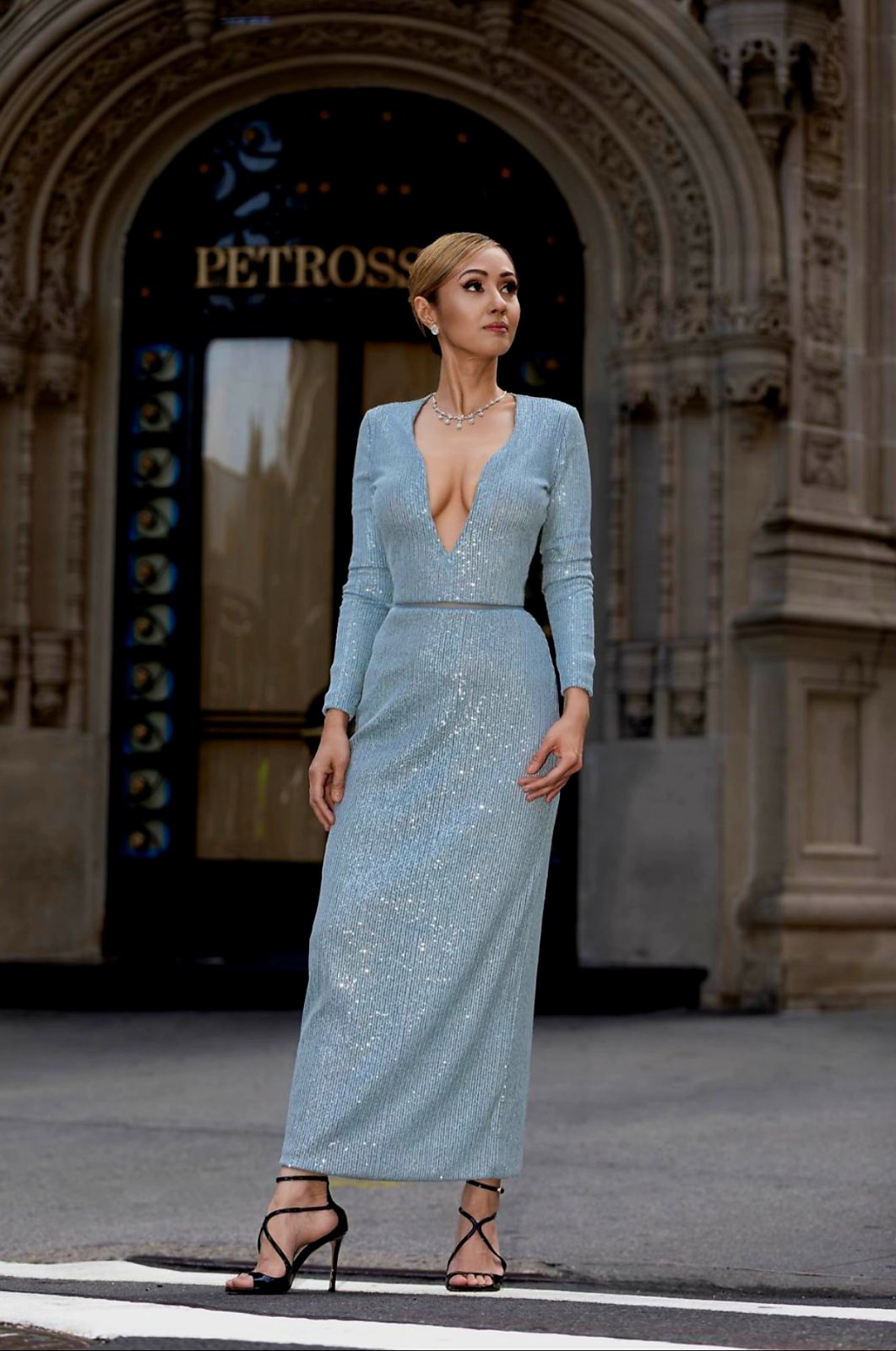
Celery green knit dress finished in shimmering sequins showcases a deep neckline and fitted long sleeves at the Petrossian Bar
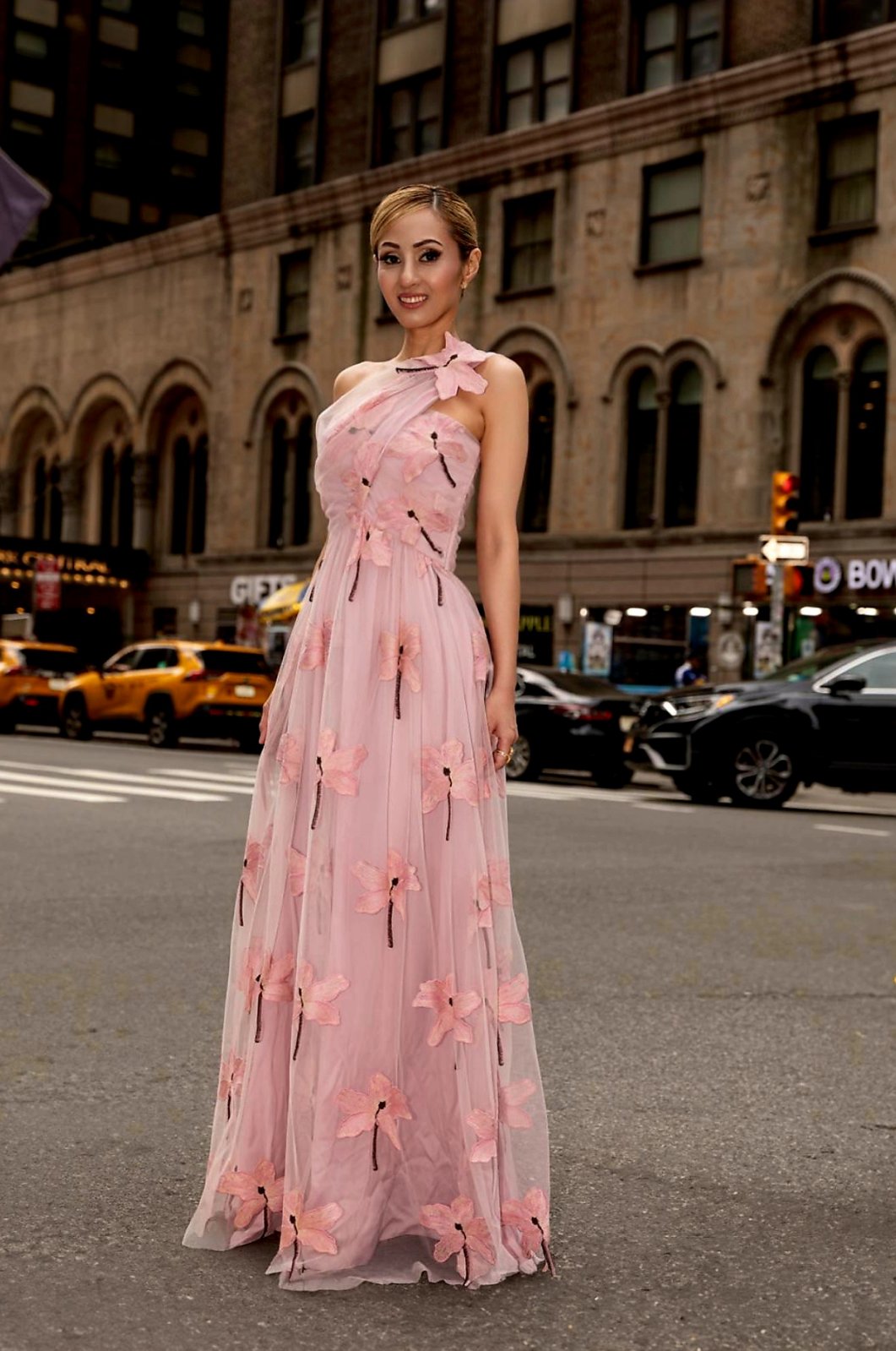
Pink floor length dress with floral appliques at the Carnegie Hall
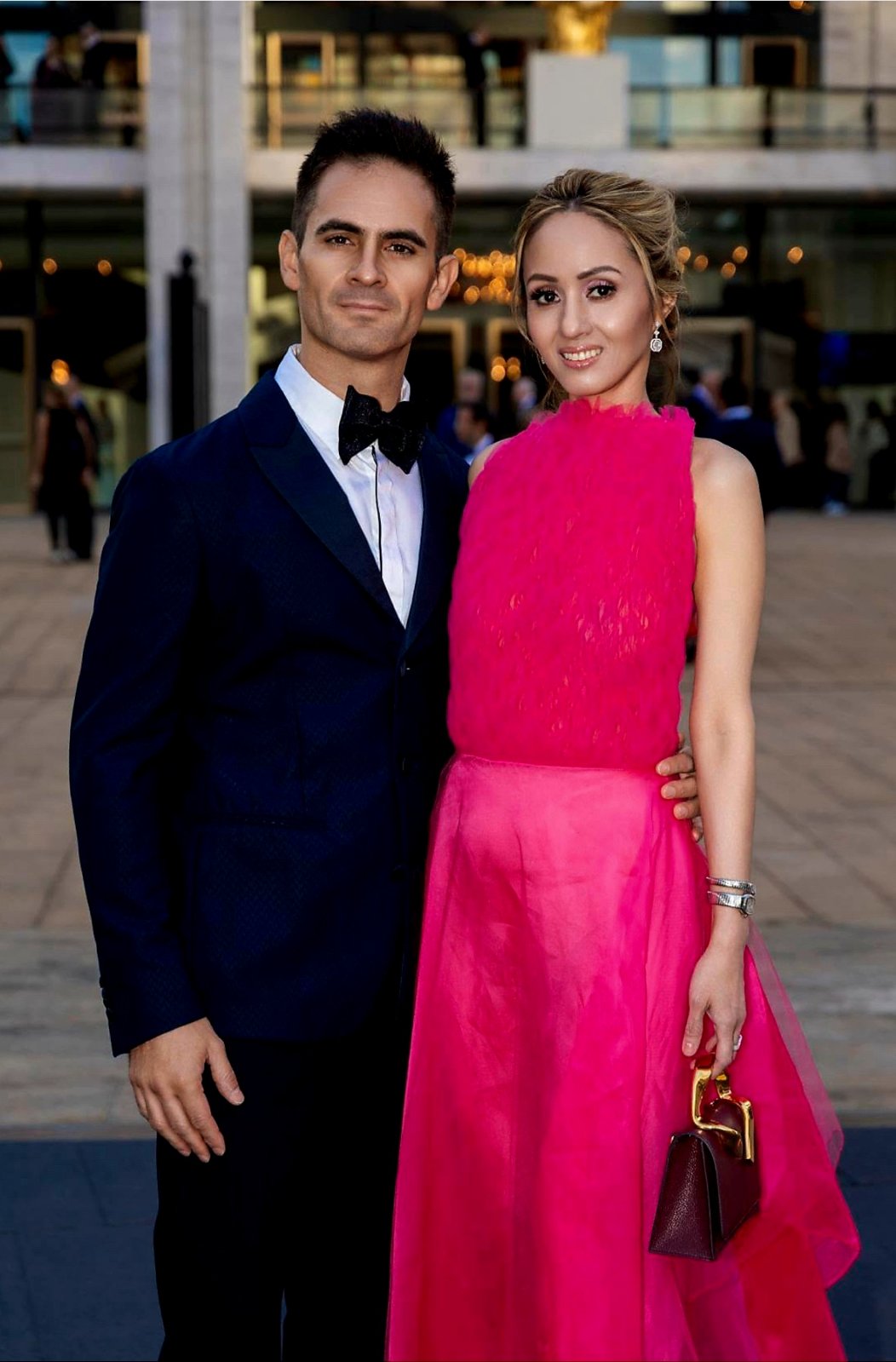
Italian Conductor Giacomo Sagripanti with fashion brand ambassador Happy Melendres at the opening gala ceremony at the New York Metropolitan Opera. Both are wearing Armani.
Style
The Invisible Part of Fashion: Five of the Most Enduring Fragrances of All Times

by Jing Ramos
It doesn’t come as a surprise that French perfume became an invention of the 20th century. In less than a hundred years, perfumers were able to transform a simple scent into an art form glorified to this day.
Modern perfumery is an intuitive cocktail of art and science. The development of a vast palette of synthetic aroma chemicals allowed perfumers to add new character, originality, and tenacity to natural scents.
It wasn’t until 1882 that these new aroma chemicals were first incorporated into a perfume. Paul Parquet of Houbigant combined coumarin with lavender, citrus, and woody notes. For the first time, a synthetic raw material contributed to a perfume composition. The age of modern perfumery had dawned. Parquet created Fougère Royale for Houbigant—French for “fern.” The perfumer declared, “If God gave ferns a scent, they would smell like Fougère Royale.” Who indeed could question the innocence of a fern?

Chanel No. 5 by Andy Warhol, 1985
1. Chanel No. 5
Coco Chanel was the first to unite the elements of a woman—the dress and the perfume—under a single magical spell. She asked perfumer Ernest Beaux to make Chanel No. 5 the most enviable perfume of all time. Beaux gathered jasmine from Grasse, May rose, and ylang-ylang, and added aldehydes to break the richness of the components into luminous simplicity.
Today, Chanel No. 5 remains undisputed in its legendary lore, bearing floral head notes and a woody base of Bourbon vetiver. The simplicity of its name—No. 5—reflects Chanel’s lucky number. The origin of that number is uncertain, though some say it was repeated in a mosaic on the floor of the orphanage where she lived for years.

Diorissimo, the 1956 masterpiece by Christian Dior, bottles the delicate charm of lily of the valley—a timeless ode to spring, luck, and pure elegance.
2. Diorissimo
In the spring of 1956, Christian Dior launched Diorissimo, which captured the essence of his lucky flower, lily of the valley, and marked a fundamental change in perfumery. Its creator, Edmond Roudnitska, clung to the motto of simplicity: “To me, simplicity is the consecration of an artist. Only when they reach the peak of their talent do artists simplify their work.”

Edmond Rouditska, creator of Diorissimo was one of the most influential perfumer of the 20th century.
Roudnitska described his creation as “a pure lily of the valley scent that evokes the woods in which it grows and the inimitable feeling of springtime.” Dior himself never sent a gown onto the catwalk without tucking in a sprig of lily of the valley as a talisman of good luck.
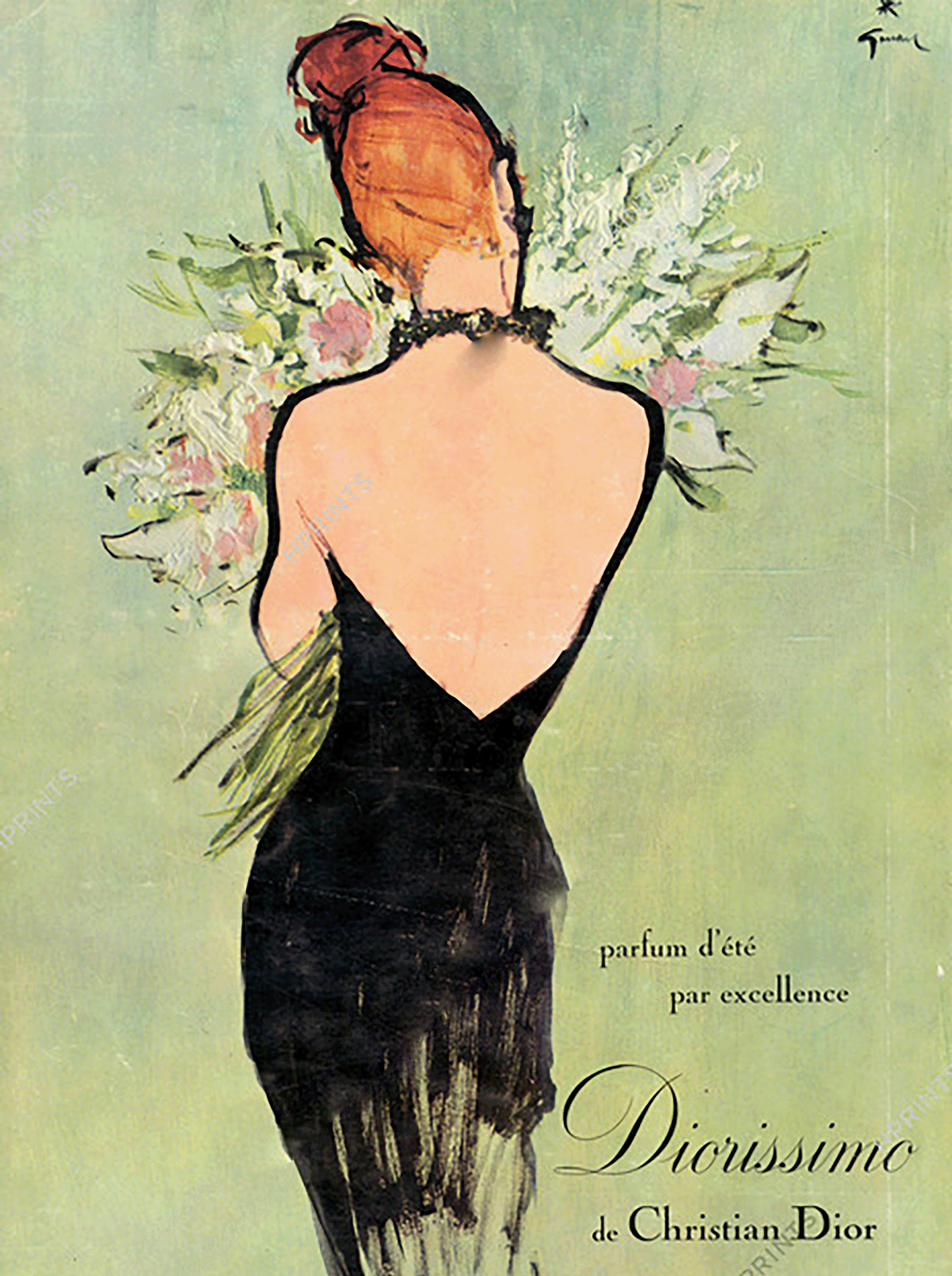
Rene Grau illustrated the advertisement for Diorissimo

Mitsouko is still considered the pride of Guerlain.
3. Mitsouko
Mitsouko represents the first perfect balance between natural and synthetic materials. Belonging to the chypre family—fragrances evoking autumn forests and mossy woods—Mitsouko was challenging to compose, as earthy mossy scents often overwhelm other ingredients.
The fragrance was named after the heroine of Claude Farrère’s 1919 novel La Bataille, a tragic love story between Mitsouko, the young wife of a Japanese admiral, and a British naval attaché training Japanese officers. Behind each Guerlain perfume, there is always a story tied to narrative or emotion.
Mitsouko is still considered the pride of Guerlain for its harmony and brilliance. “It has the dream smell of a woman’s skin,” Jean-Paul Guerlain said, regarding it as one of the house’s greatest achievements.
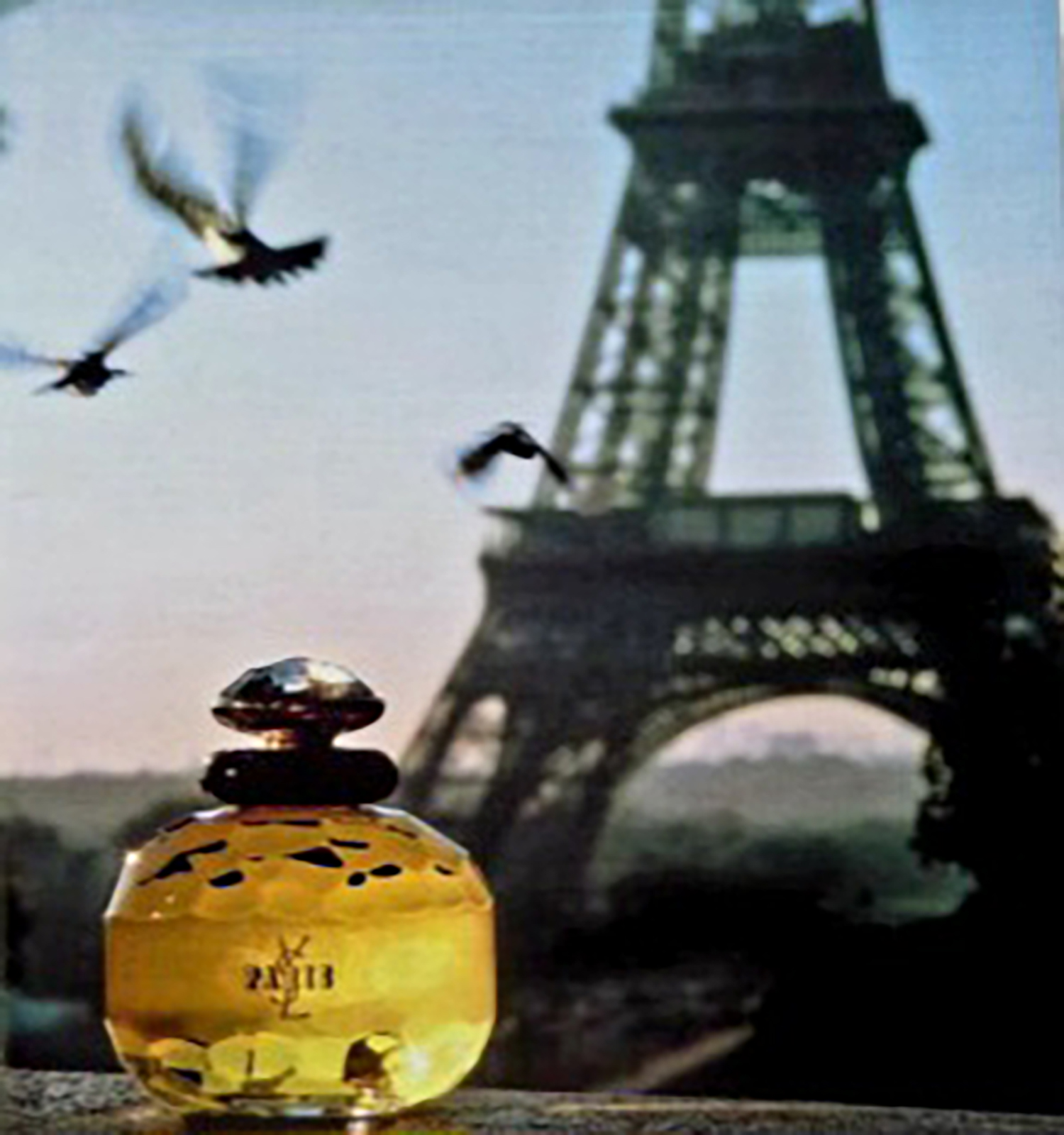
Yves Saint Laurent’s choice of the name Paris is key to the development of the fragrance.
4. Paris
Paris proved that it was possible to add a new olfactory edge to the familiar fragrance of roses. The name was Yves Saint Laurent’s idea: “I wanted to call it Paris because it is the city I love,” he explained, paying homage to the City of Lights.
Saint Laurent envisioned old-fashioned plump roses like those in Marrakech’s gardens. Once, after returning from Morocco, he brought back an empty little box that held the most intense rose odor. He showed it to perfumer Sophia Grojsman; it smelled like roses mixed with violets. She experimented with damascones—powerful aroma chemicals in Bulgarian rose oil—and blended them with rose absolutes to create an explosion of roses.
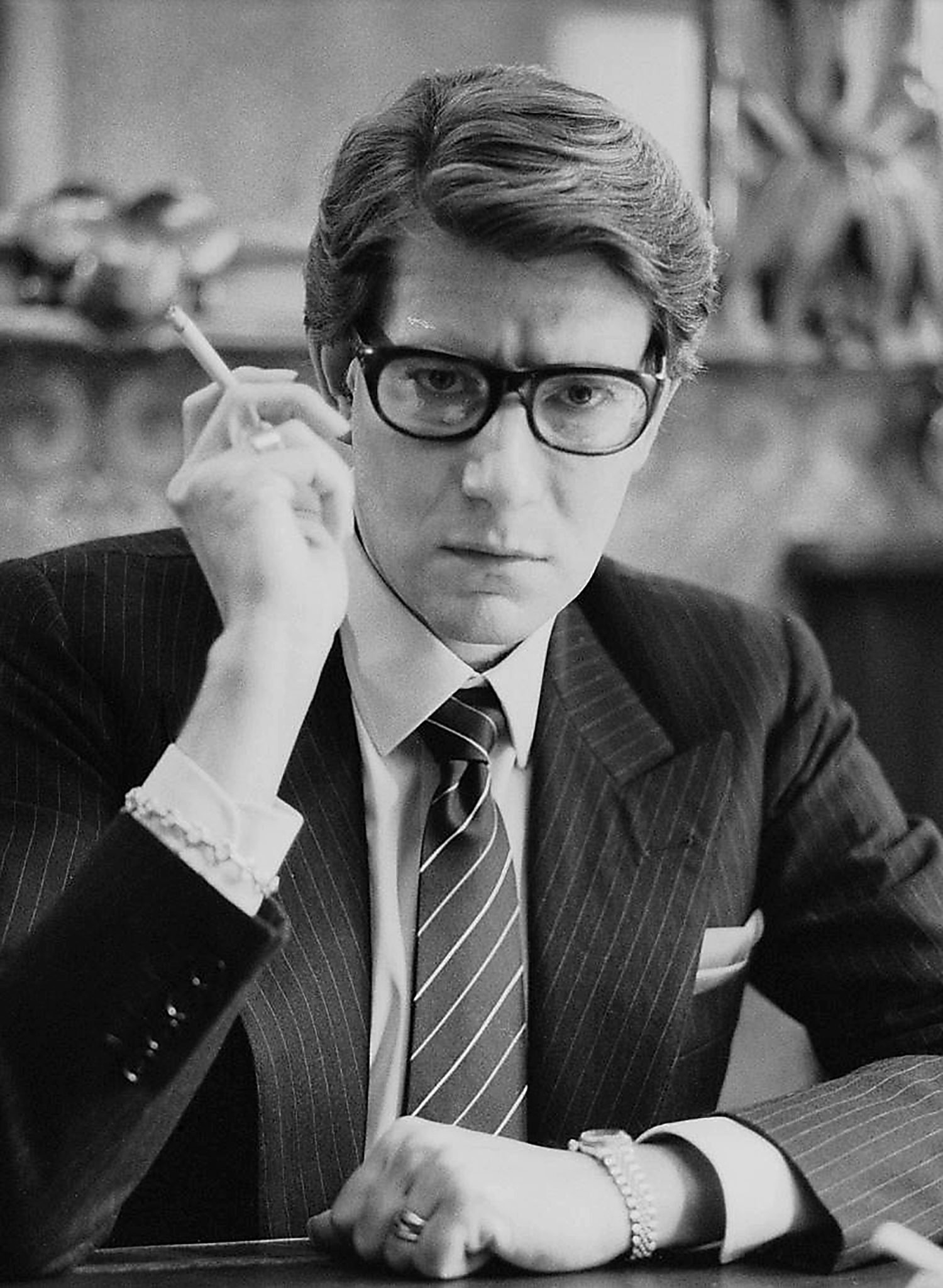
Yves Saint Laurent presented Paris, the perfume as an homage to the city he loved.
Saint Laurent concluded:
“Paris is a romantic fragrance, a floral woody amber composition in which roses vibrate with mimosa, geranium, and iris to make a magnificent bouquet.”
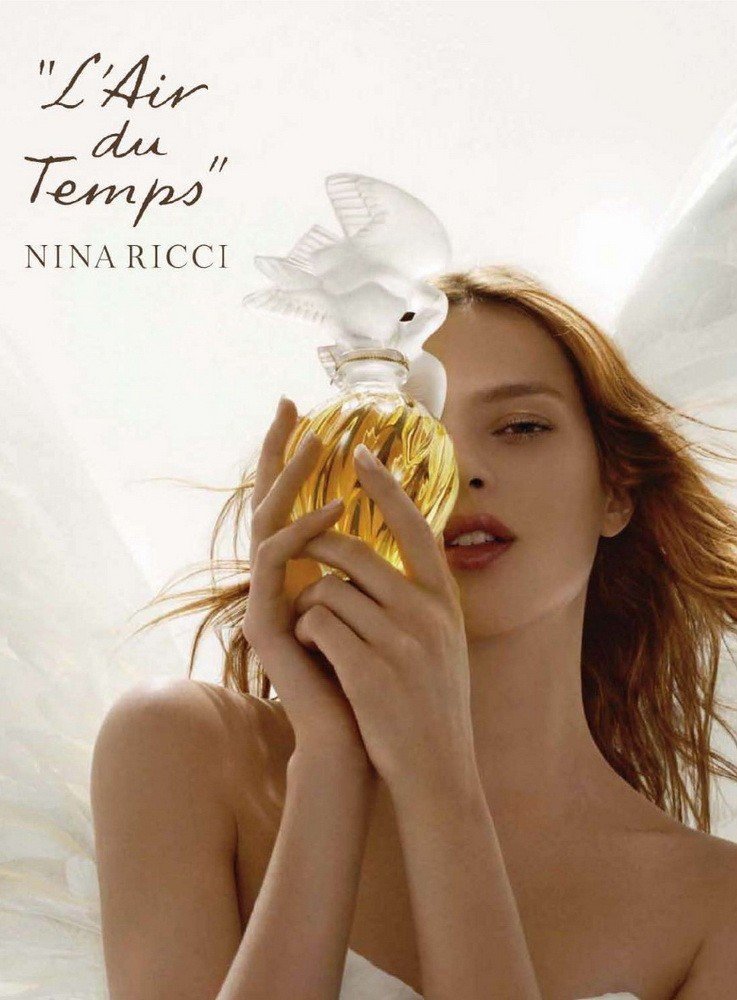
No other perfume has captured the essence of romance as L’air du Temps.
5. L’Air du Temps
When L’Air du Temps was released, it captured the spirit of living freely again. “The real spirit of Nina Ricci is a spirit of happiness,” said Robert Ricci, son of the couturier Nina Ricci. He claimed the fragrance embodied her refinement and subtlety.
L’Air du Temps is a lively, balanced, and consistent perfume, from its bright head notes to its engaging base. Through floral hints, musk, and secret spices, it radiates a mysterious scent with the power of seduction.
“The creation of a perfume is an act of love, whether real or imaginary.” – Nina Ricci
Style
Filippo Summer/Spring 2025 Menswear Collection-Fashion Designer Phillip Rodriguez Stays on Top of the Game
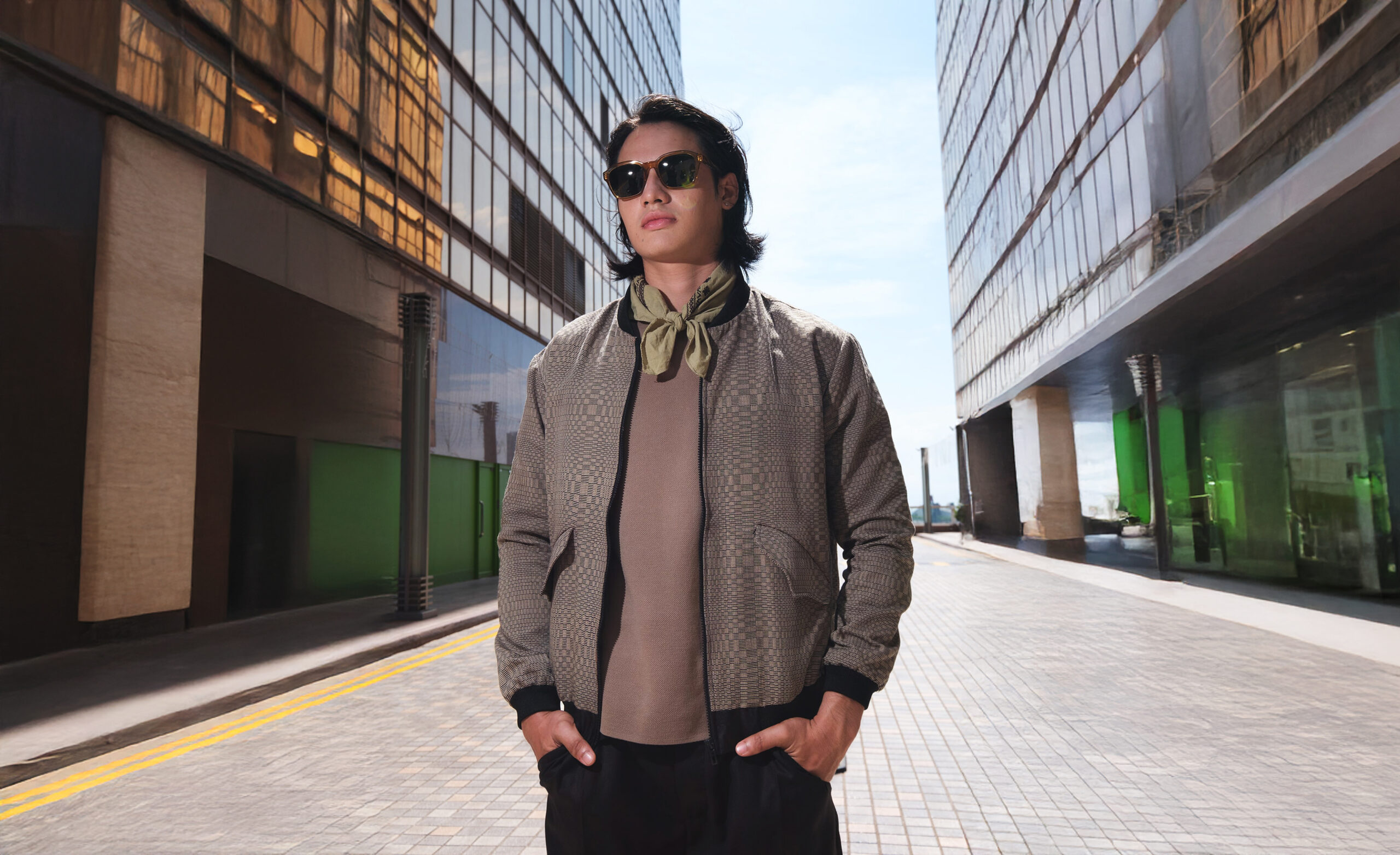
by Jing Ramos | photography David and Cherry | shot on location in Hong Kong and Macau | model Sharuen Hafeel
Presently, Phillip Rodriguez is almost without peer when it comes to conveying an atmosphere and mood of understated luxury. His recent capsule collection of menswear defines a relatable and modern silhouette in luxurious fabrics. Think bomber jackets and Nehru suits made with binakol fabric from Ilocos, piña for the barong Tagalog, linen for suits with dress shirts embroidered in Lumban, and hand-loomed Inabel for crisp white dinner jackets.
“My inspiration has always been updated classics with a great respect for our cultural heritage,” Phillip Rodriguez sums up his design ethos.
Binakol bomber jacket matched with knitted t-shirt, accented with ethnic scarf.
The success behind the designer’s wide-ranging portfolio lies in its alignment with the luxury market—and a clear balance between business sense and creative spirit.
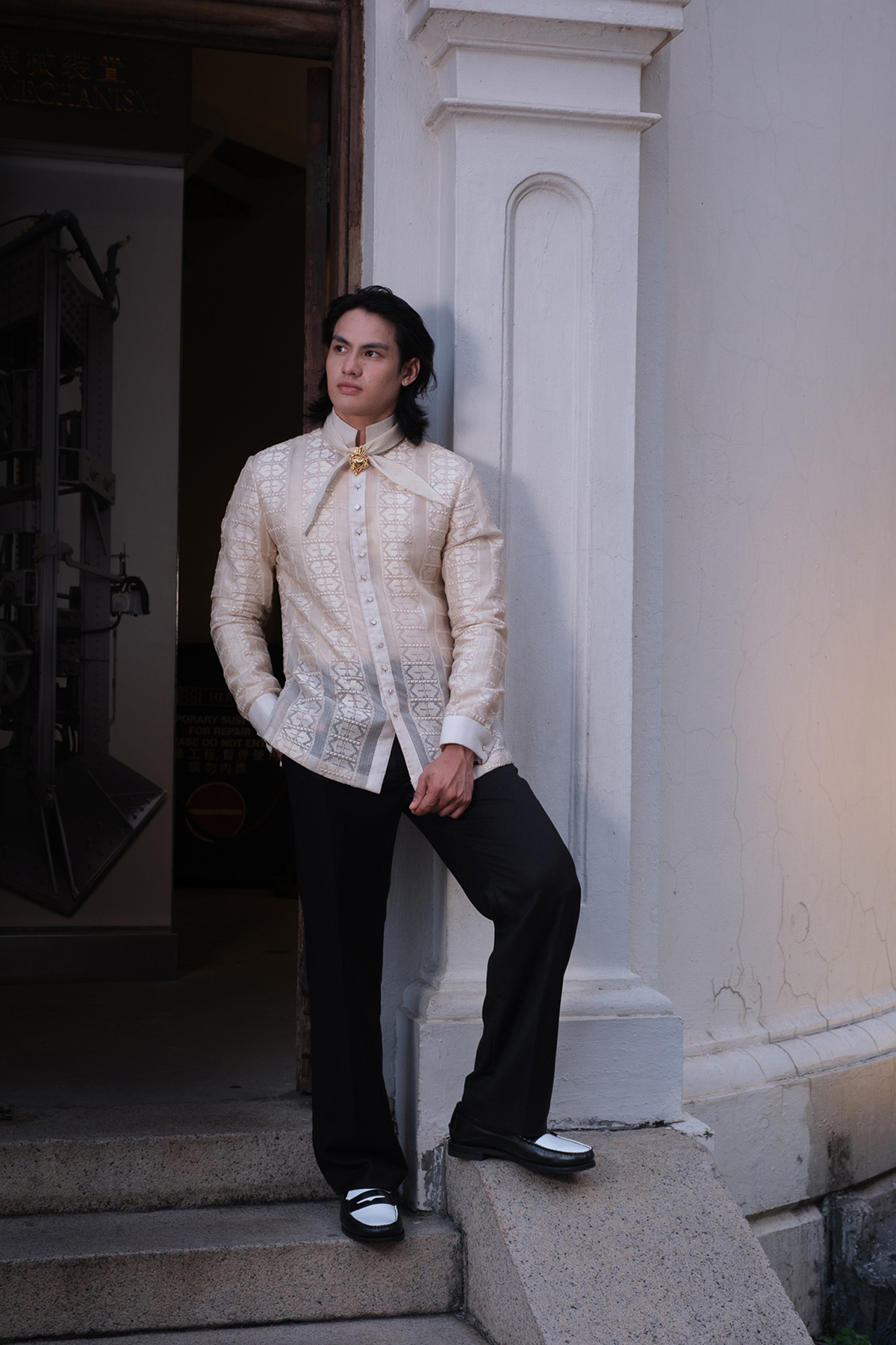
Pinya rengue and calladoed barong.
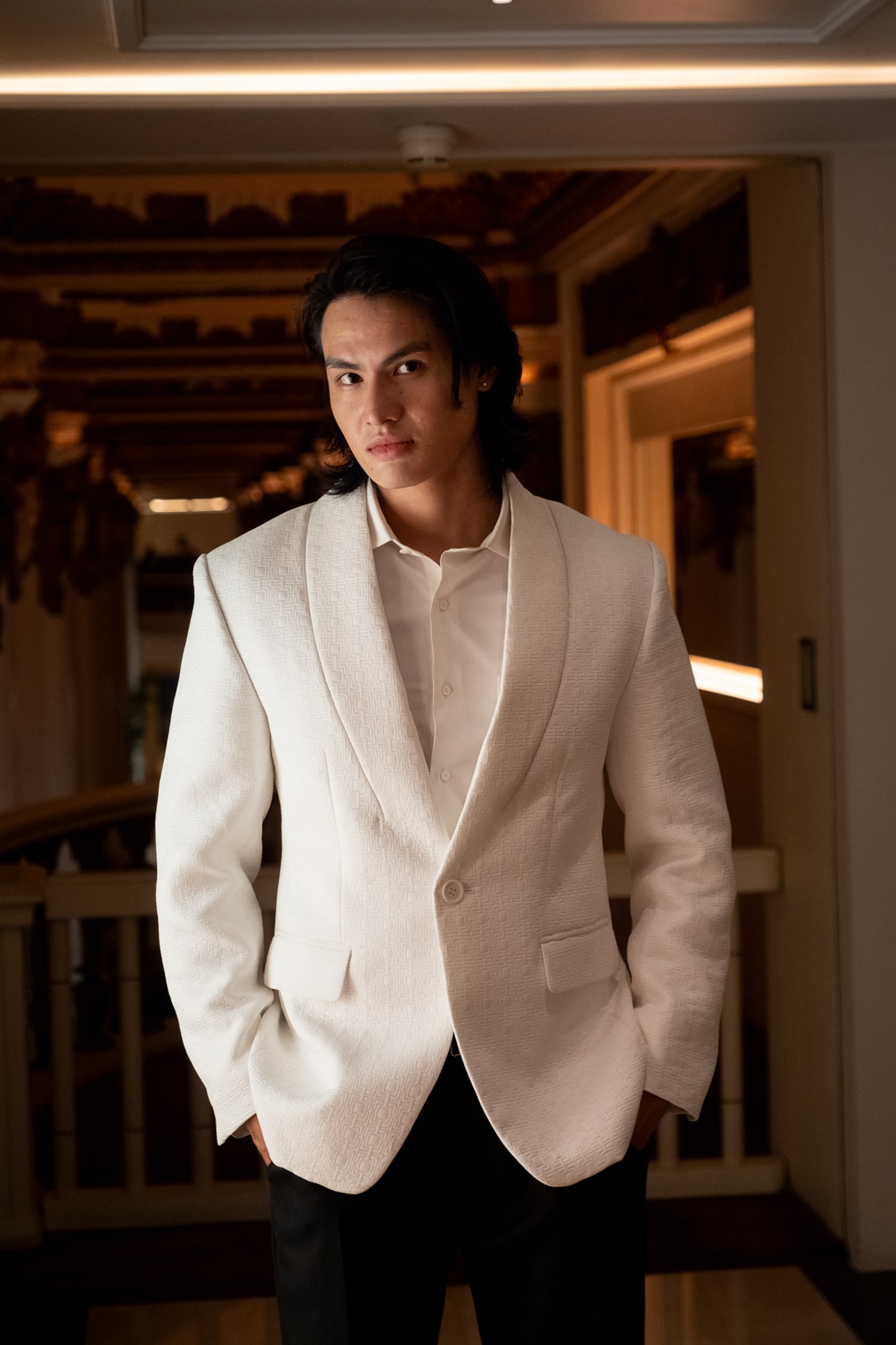
Abel white dinner jacket
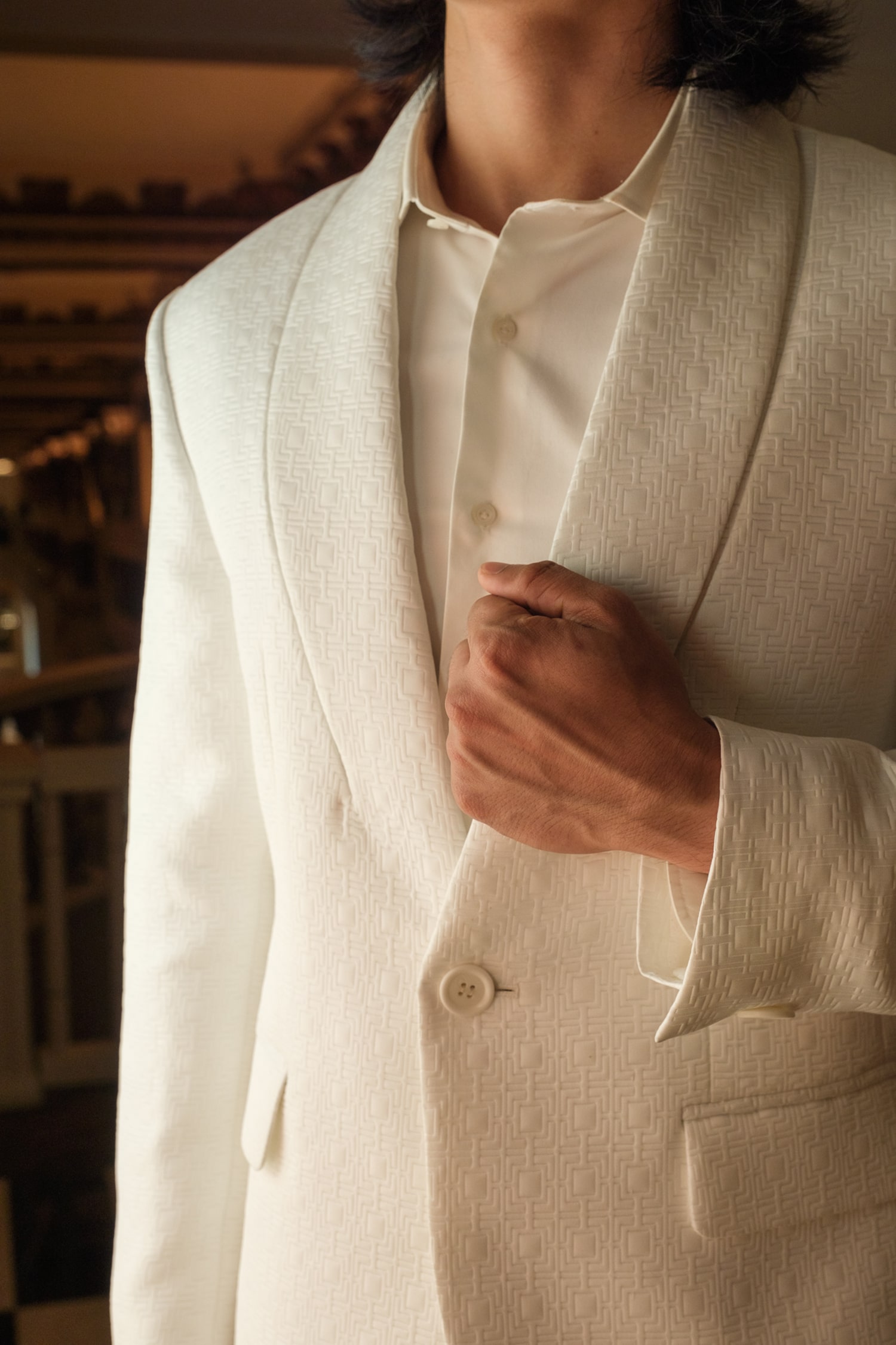
“I make sure to adapt to change, keep an open mind to trends, and yet remain consistent with my core branding,” Rodriguez says, illustrating how he has managed to stay on top of the fashion game for four decades.

Chiquitilla barong in pinya
But what makes the designer especially vital and relevant to the community is his advocacy: the revitalization of the ramie industry culture. It’s a perfect sustainable alternative to linen—lighter, breathable, and less prone to wrinkles. The current stagnation of the industry is largely due to the pollution caused by degumming and the low competitiveness of ramie textiles in the global market.
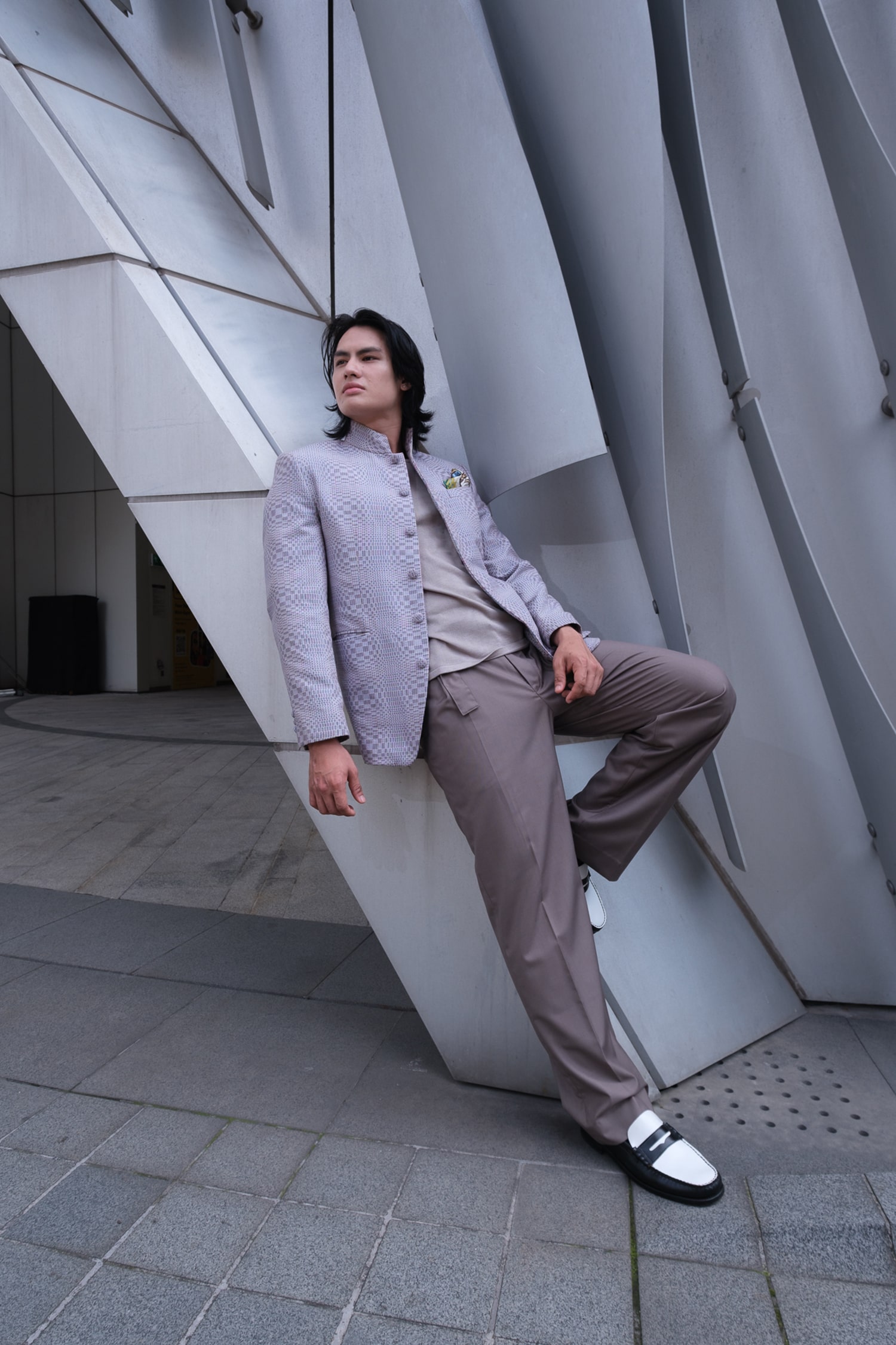
Binakol Emilio Aguinaldo inspired jacket. With knitted shirt under.
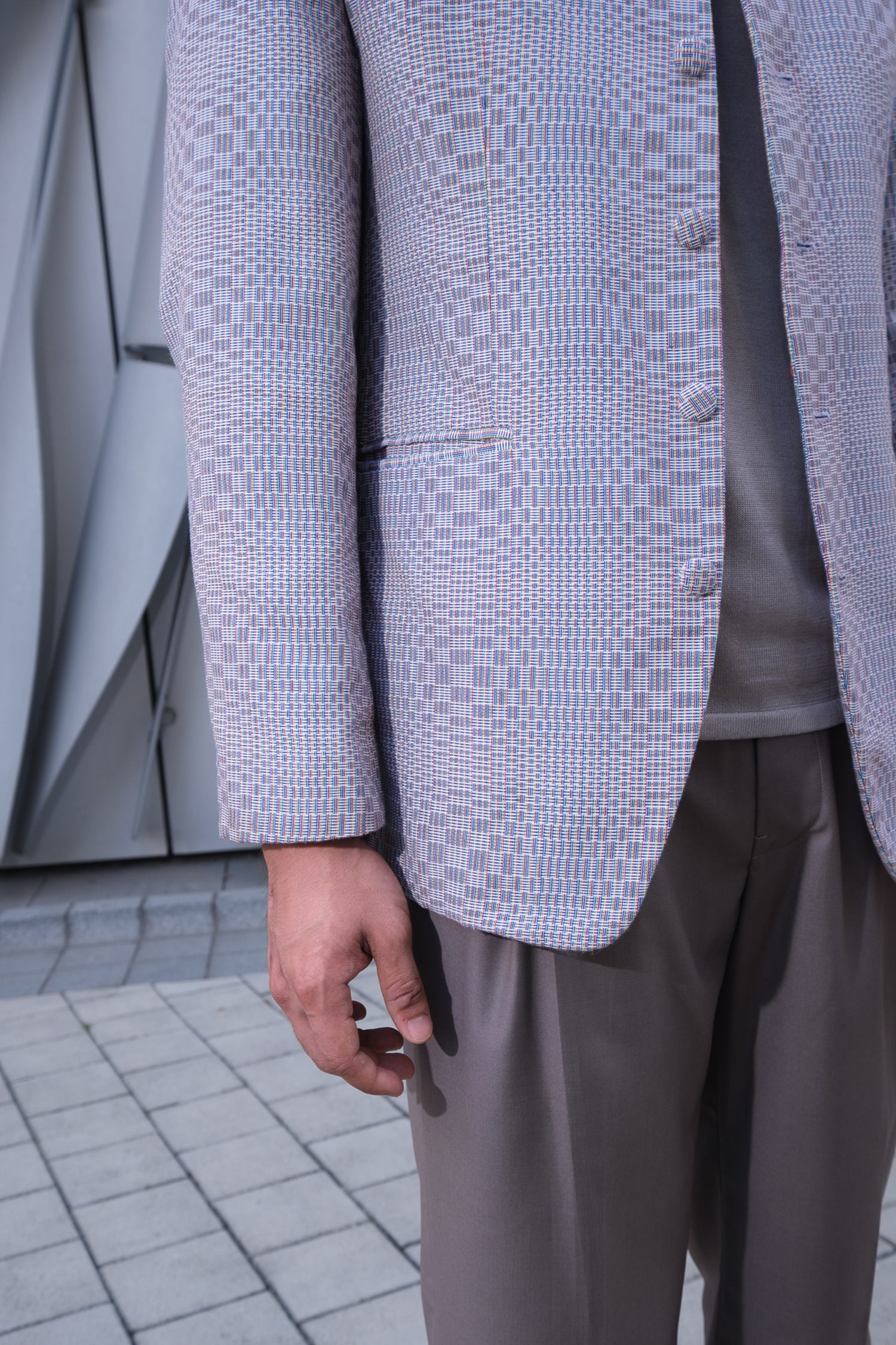
“My objective is to establish a degumming station and milling facility in the capital region, with the goal of blending ramie with other fibers like cotton or piña to create a new fabric called Lino Sugbo,” he shares.
“This isn’t just to promote the local craft industry, but also to champion sustainable fashion using an organic fabric with rich cultural heritage and a fascinating history,” Phillip Rodriguez concludes.
Fashion designer Phillip Rodriguez
-
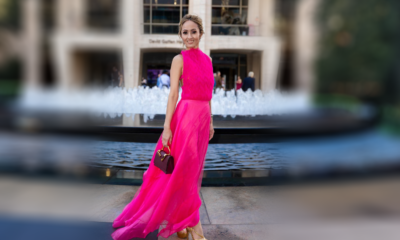
 Style1 week ago
Style1 week agoHappy Melendres Traipsing Around Manhattan in Non-Stop Armani
-
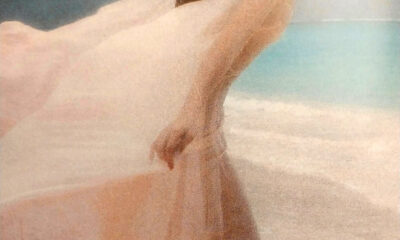
 Style2 months ago
Style2 months agoThe Invisible Part of Fashion: Five of the Most Enduring Fragrances of All Times
-
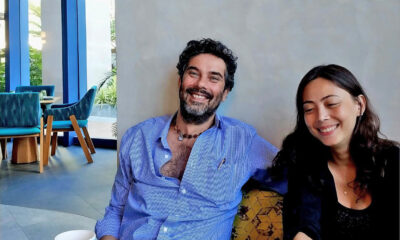
 QuickFx3 months ago
QuickFx3 months agoModern Indian Cuisine; Gagan Sethi and Gwen Trott Spice Things Up at Goa Nights in Cebu
-

 Arts & Culture4 weeks ago
Arts & Culture4 weeks agoKultura. Kapital. Kasalukuyan: Art that Speaks of Today
-
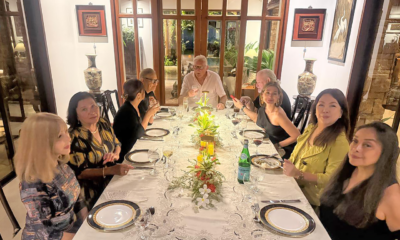
 The Scene3 weeks ago
The Scene3 weeks agoAnother Elegant Dinner at Chez Marguerite
-

 Prime Target3 weeks ago
Prime Target3 weeks agoLuna Vdl–Endless Summers in Siargao
-

 The Scene4 weeks ago
The Scene4 weeks agoA Stylish Soirée: Cebu’s Elite Celebrate Jackie Deen Lotzoff at Mad Thai
-
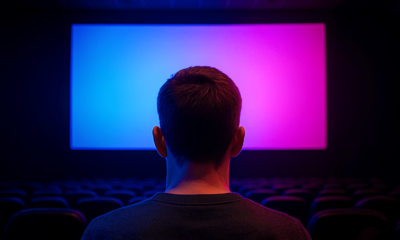
 QuickFx2 weeks ago
QuickFx2 weeks agoI Lost It at the Movies: Five of the Most Significant Films of the 1960s

